Kyalami Racing Circuit (from Khaya lami, “my home” in Zulu) is located in Midrand, Gauteng province, South Africa.
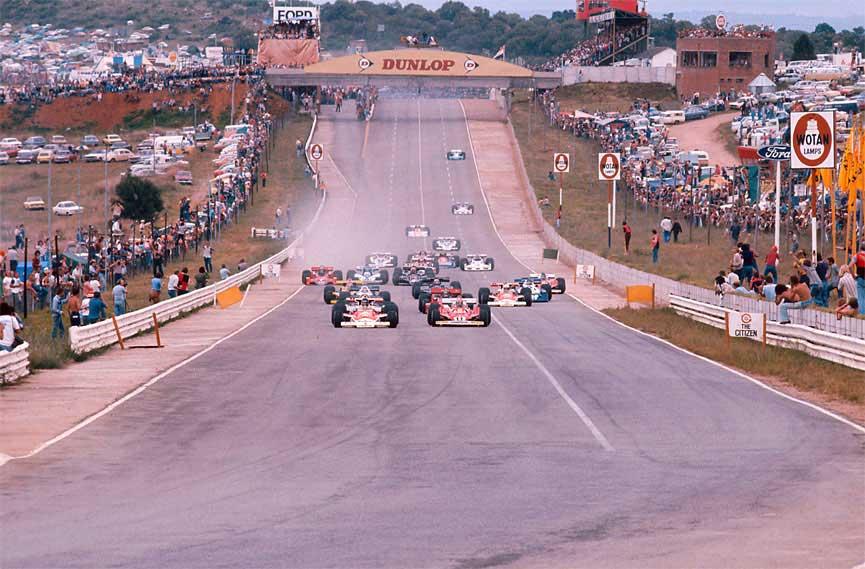
The circuit, one of the fastest on the calendar, has been used for Formula One races and has hosted the South African Grand Prix many times. In recent years, the area surrounding the circuit has developed into a residential and commercial suburb of Johannesburg.
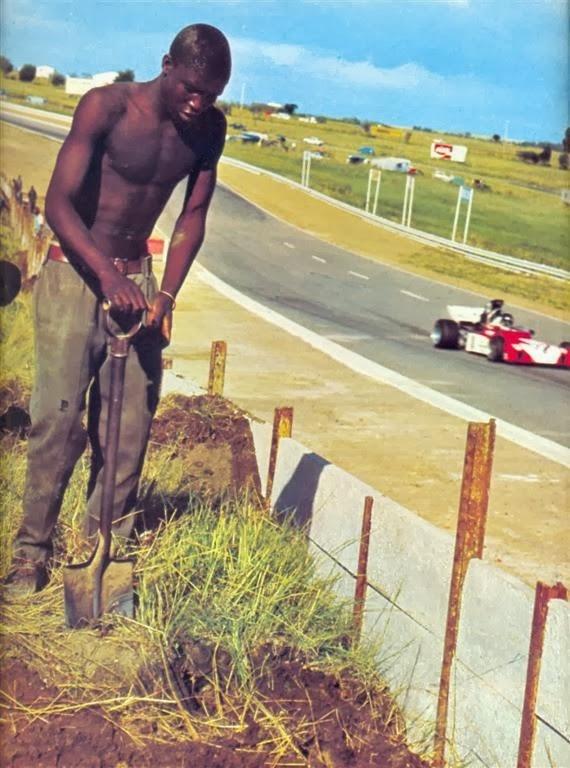
Kyalami. Formula 1 was one of the last sports to leave South Africa at the time of Apartheid.
The original, sweeping circuit was in use from 1961 until political sanctions (due to apartheid policies) eliminated the Grand Prix after the 1985 race.
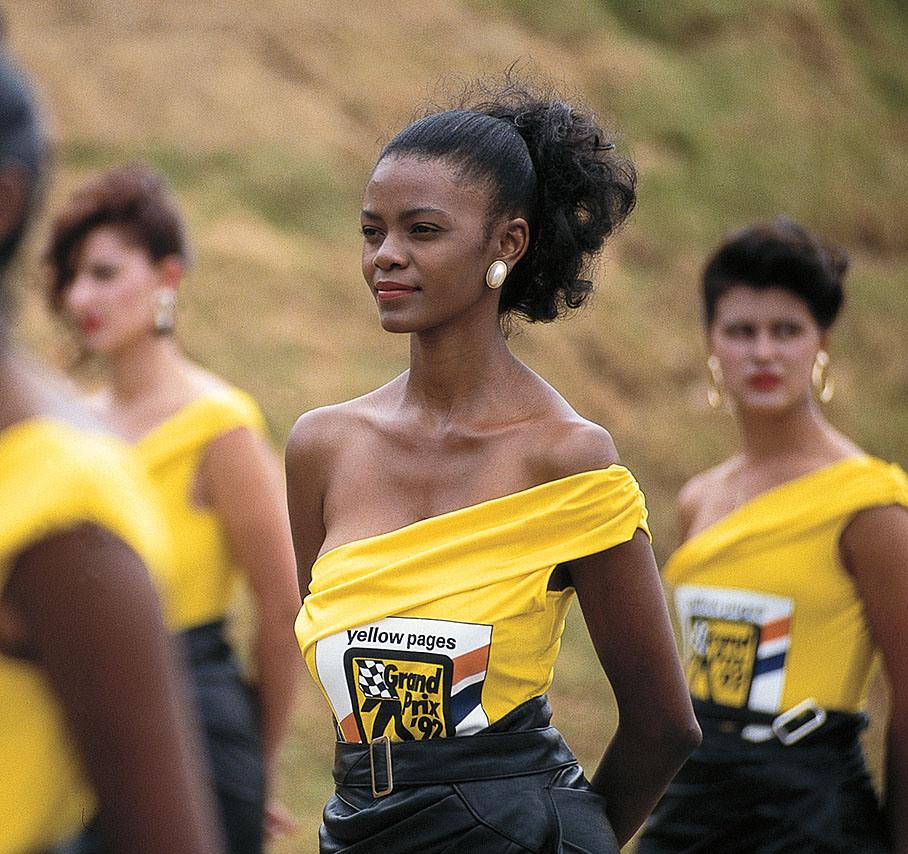
Girls at Kyalami in 1992. Photo by Rainer Schlegelmilch.
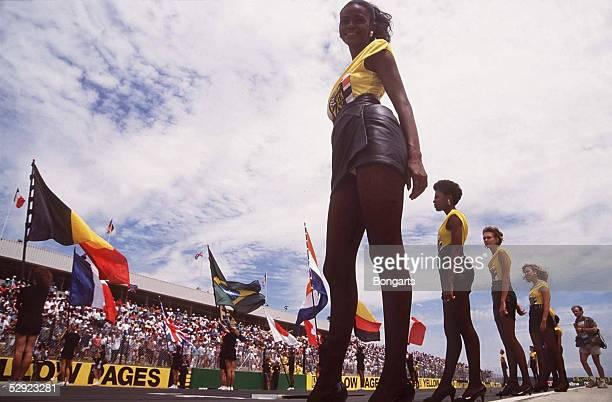
Grid girls at Kyalami in 1992.
When F1 returned to Kyalami in 1992 it was to a greatly changed circuit, badly mutilated, with little of the charm of the original left.
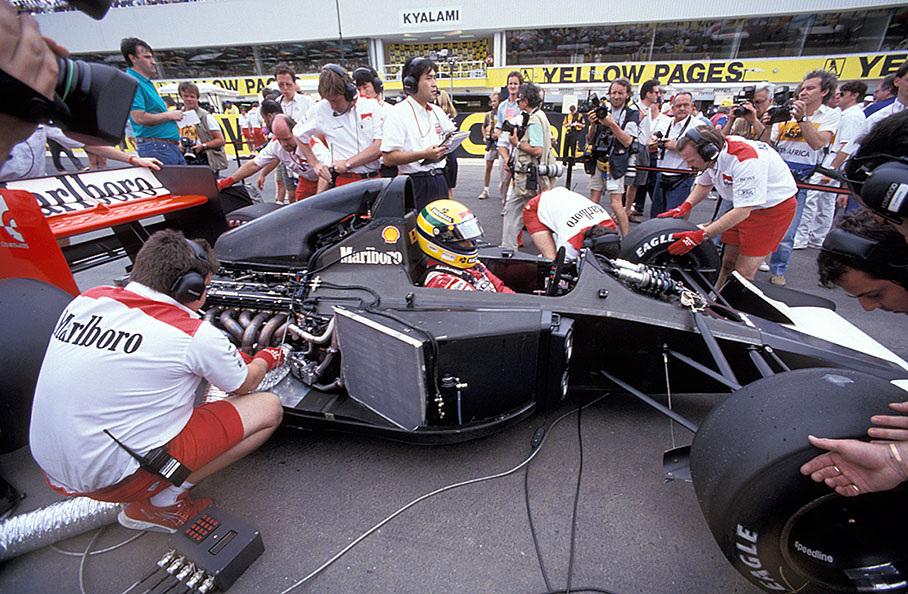
Ayrton Senna in 1992 at Kyalami. Photo by Rainer Schlegelmilch.
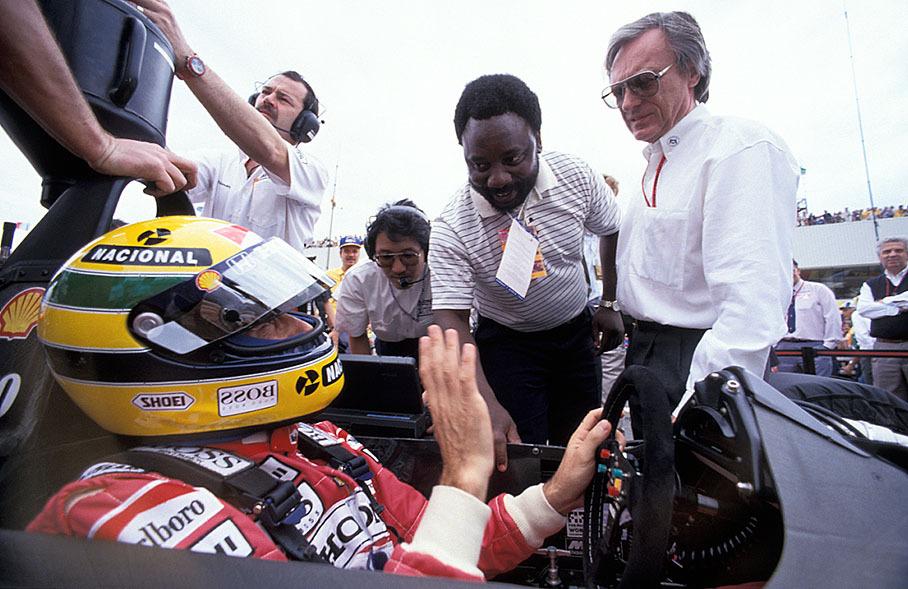
Ayrton Senna in 1992 with Bernie Ecclestone at Kyalami. Photo by Rainer Schlegelmilch.
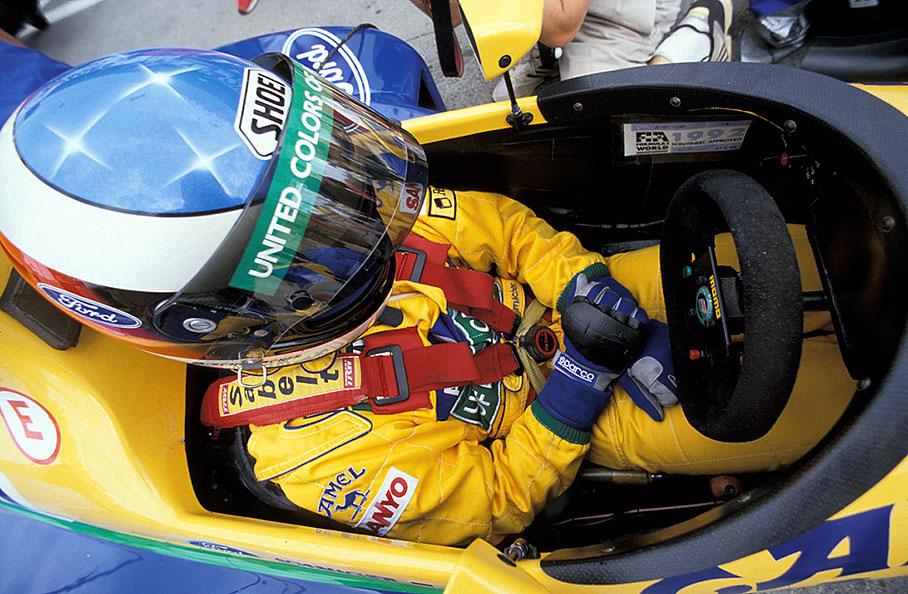
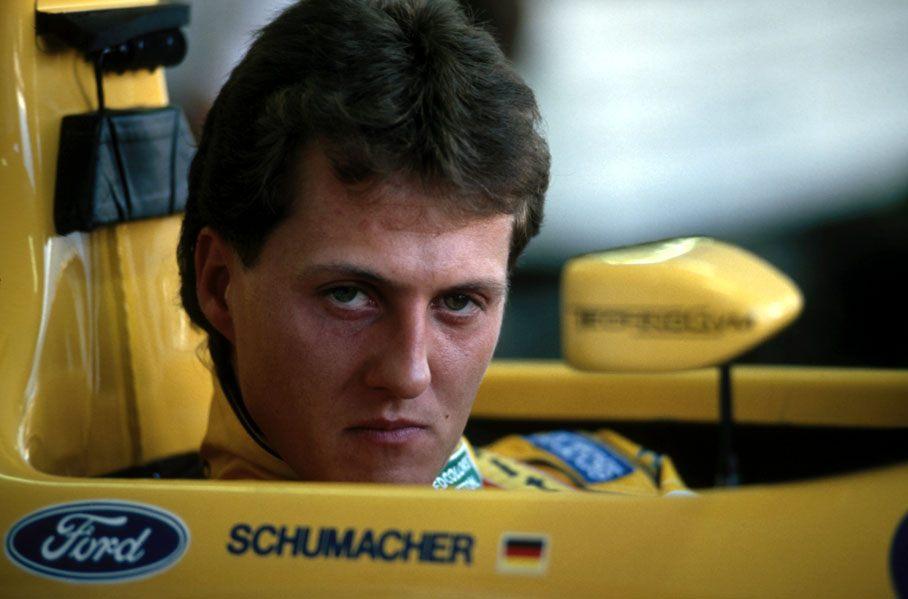
Michael Schumacher in 1992 at Kyalami. Photo by Rainer Schlegelmilch.
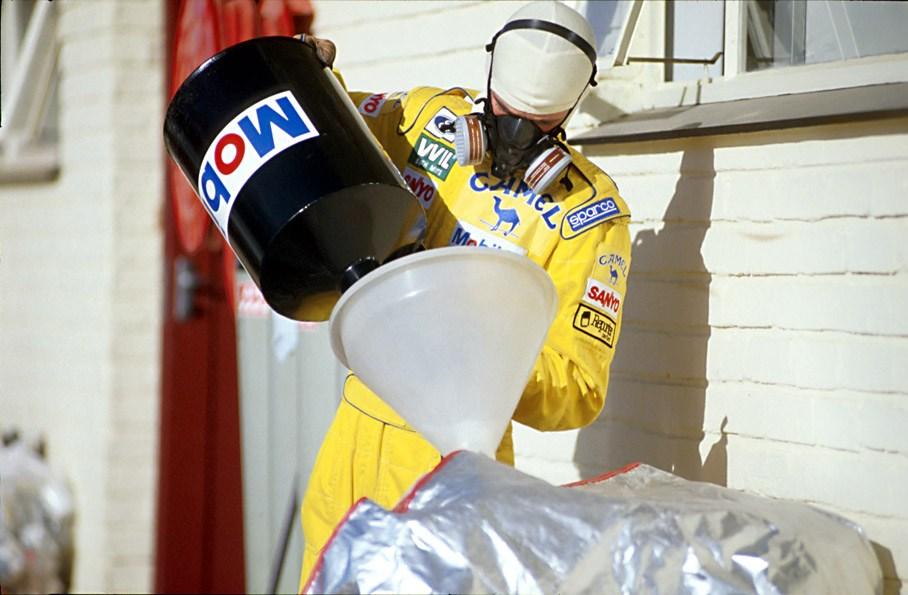
Mechanics fuelling Benetton in 1992 at Kyalami. Photo by Rainer Schlegelmilch.
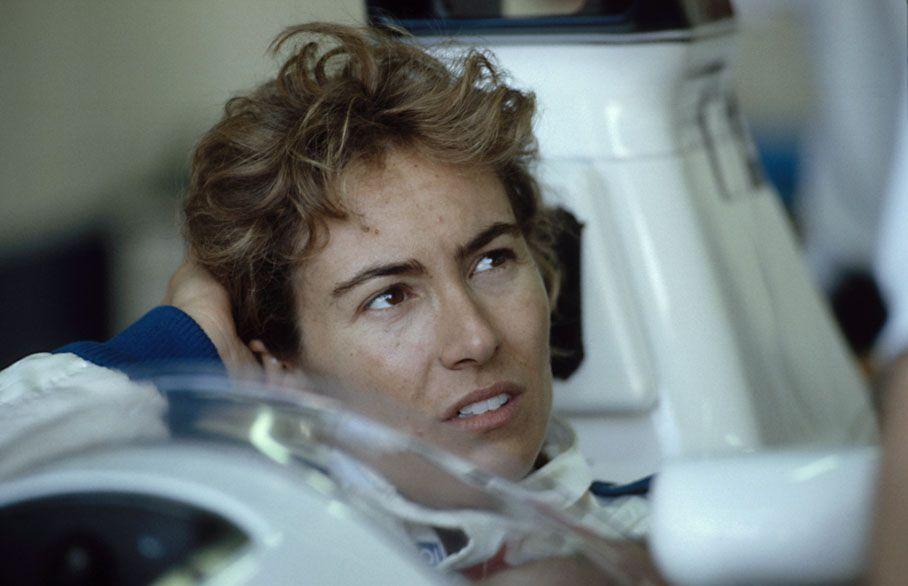
Giovanna Amati in 1992 at Kyalami. Photo by Rainer Schlegelmilch.
Only two of the original corners remained – Sunset and Clubhouse, although like every other corner these were now named after sponsors. The latter was supposed to be referred to as ‘Yellow Pages’ without a hint of irony… The new track was generally slow. By today’s standards it might actually be considered quick and the lack of run-off in some spaces would be more of a concern.
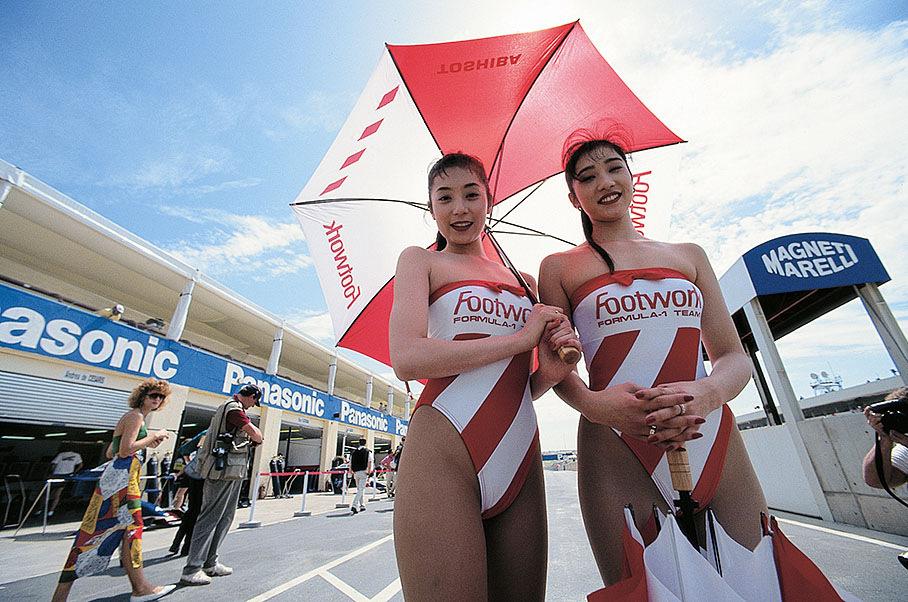
Formula 1, girls, South Africa, Kyalami, 1993. Photo by Rainer Schlegelmilch.
It opened the 1992 and 1993 seasons and Williams routed the field in both events.
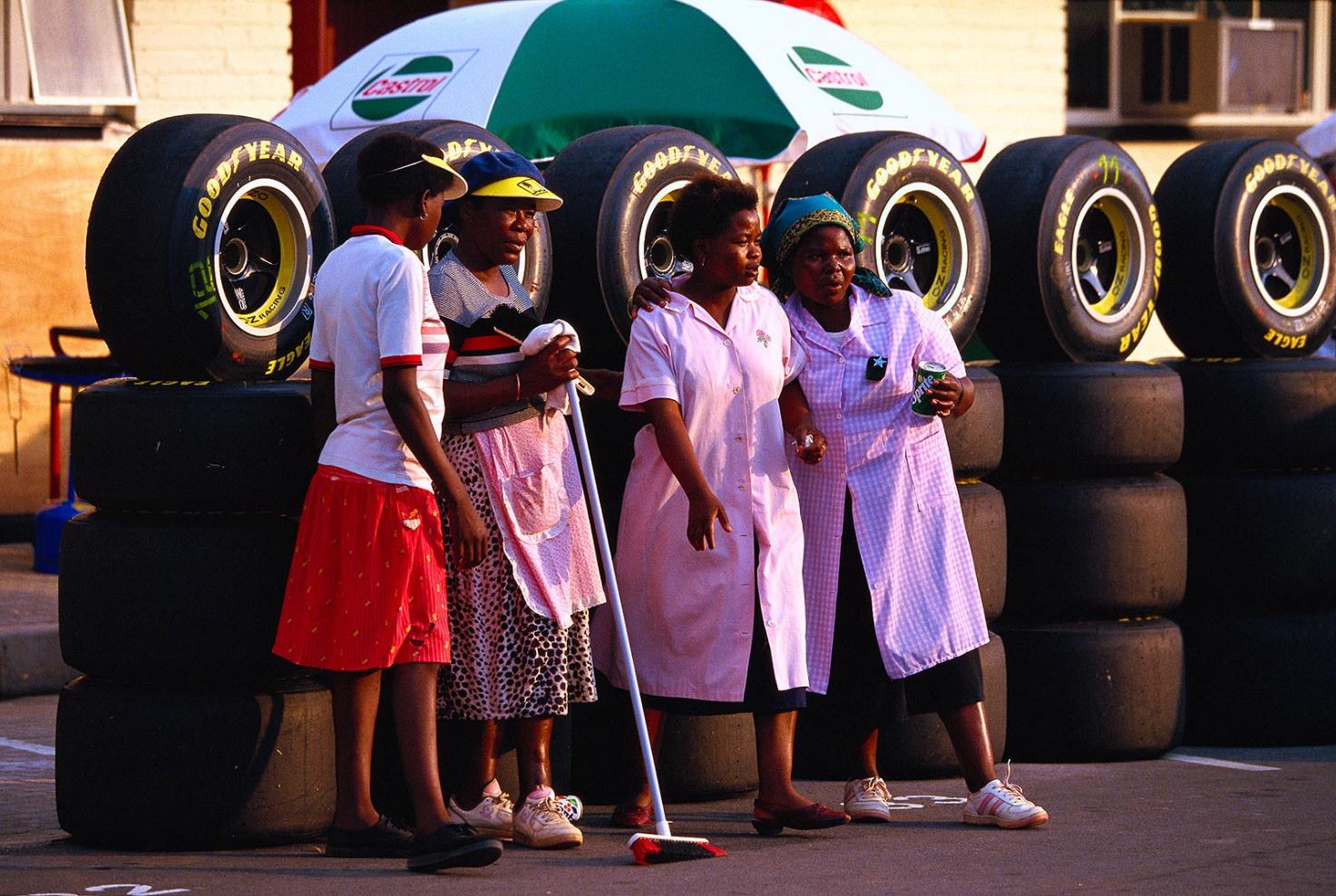
Women and tyres in 1993 at Kyalami. Photo by Rainer Schlegelmilch.
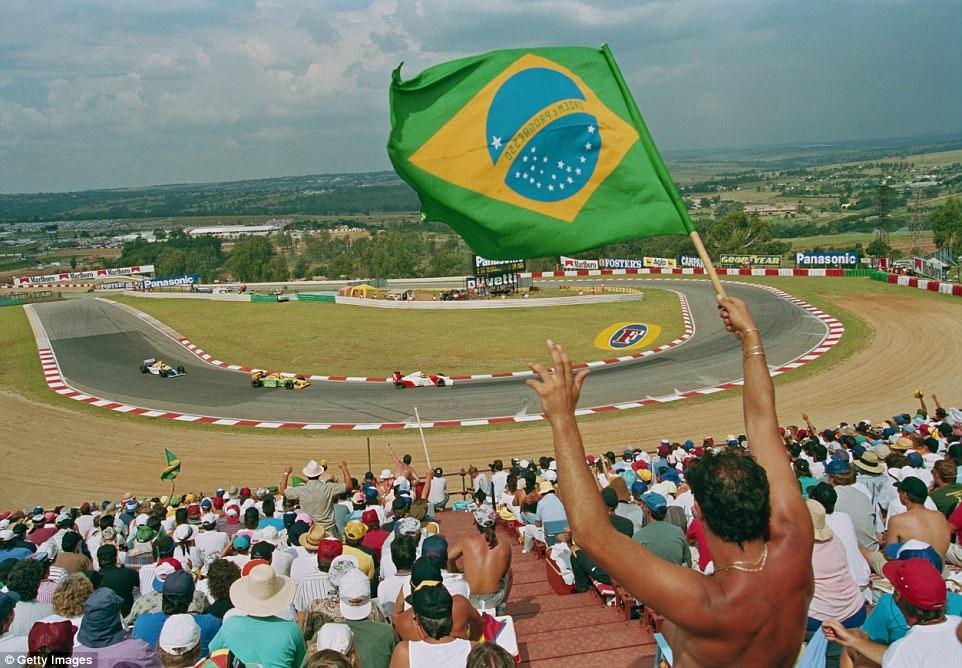
Judging by these F1 fans you could be mistaken for thinking this was a race in Brazil. But the flags are in South Africa and they are for Senna, who leads Schumacher and Prost around Kyalami in the 1993 season.
Formula One only returned once, abandoned the rebuilt circuit in 1993 after just two races and a bankruptcy on the part of the promoter and since then has not been back to South Africa.
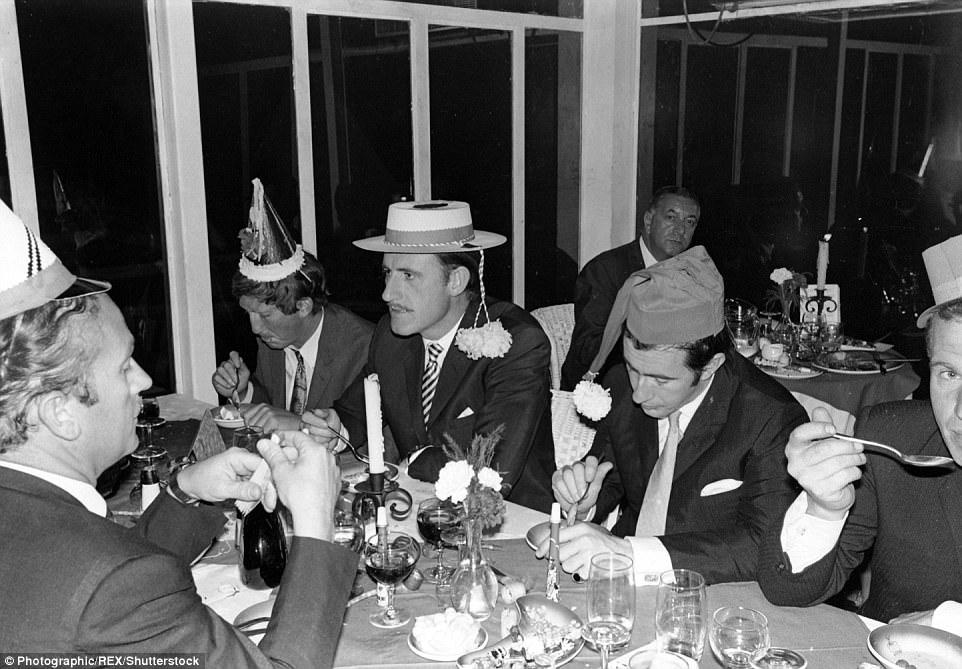
January 1 1968 meal ahead of the South African GP a day later.
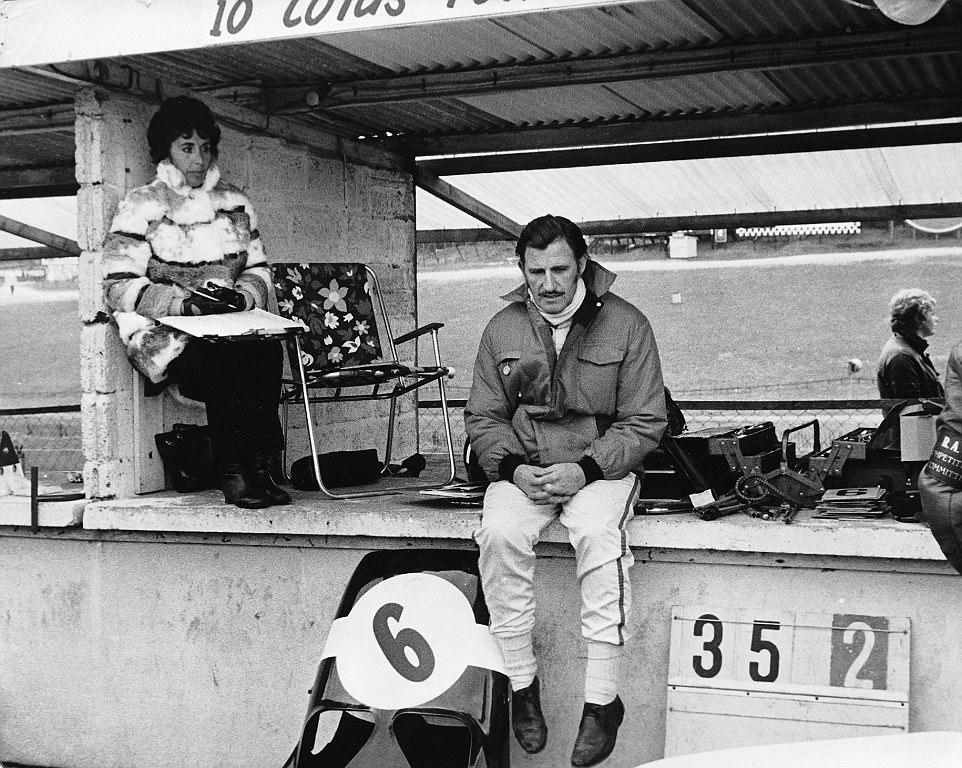
Graham Hill during 1970 practice at Kyalami and his wife Bette.
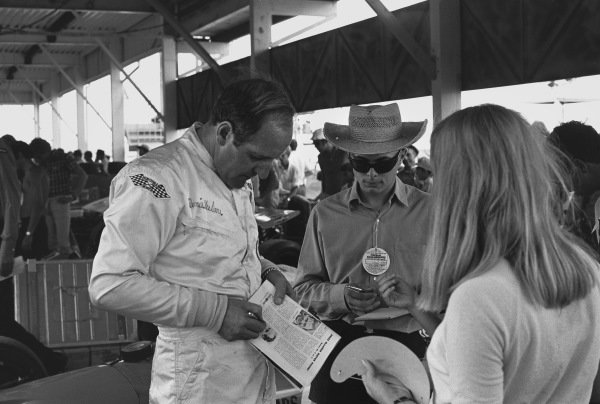
Dennis Hulme (McLaren M14A-Ford), 2nd position, signs autographs in the pits at the 1970 South African Grand Prix. Photo by LAT Photographic.
Kyalami has long been considered the centre of motor racing in South Africa and, appropriately, takes its name from a piece of land on its northern border; in the local Sesotro language, Kyalami means 'my home'.
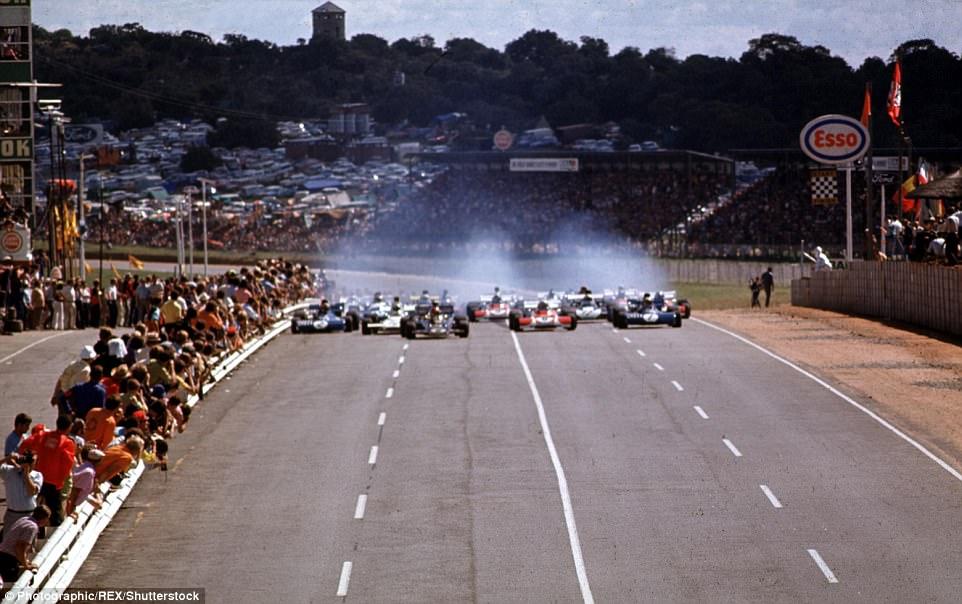
1972 South African Grand Prix.
The idea for a motor racing venue near Johannesburg first came to a band of local enthusiasts in the early post war years.
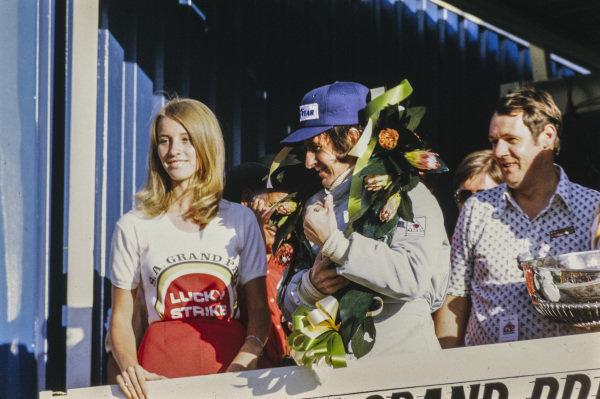
South African GP 1973.
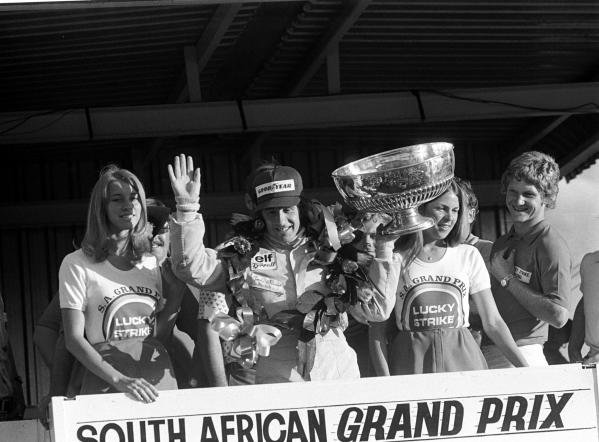
1973 South African GP, Kyalami. Jackie Stewart (Tyrrell Ford) 1st position on the podium. Photo by Lat Photographic.
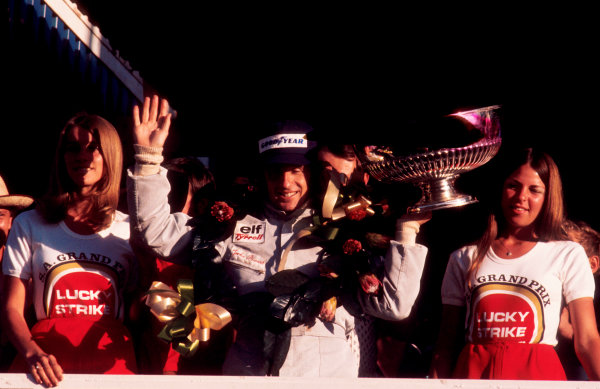
1973 South African GP, Kyalami. Jackie Stewart (Tyrrell Ford) 1st position on the podium. Photo by Lat Photographic.
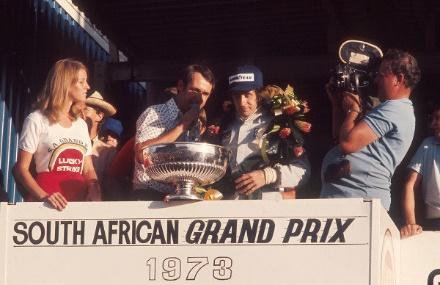
1973 South African GP, Kyalami. Jackie Stewart (Tyrrell Ford) 1st position on the podium. Photo by Lat Photographic.
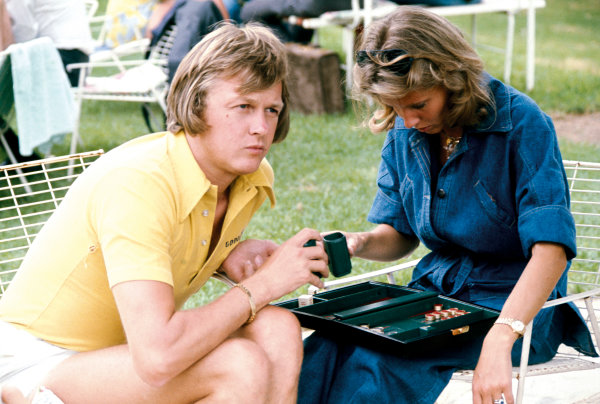
Ronnie and Barbro Peterson at Kyalami in 1975.
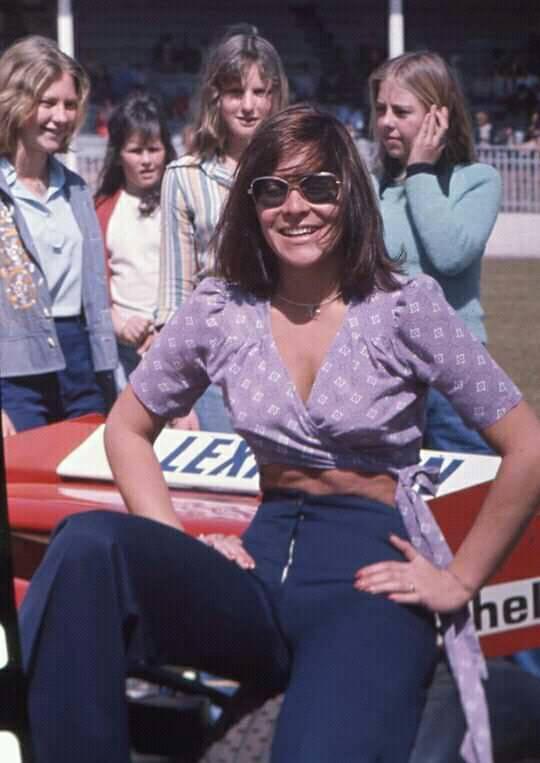
Vintage grid girls, Kyalami 1975.
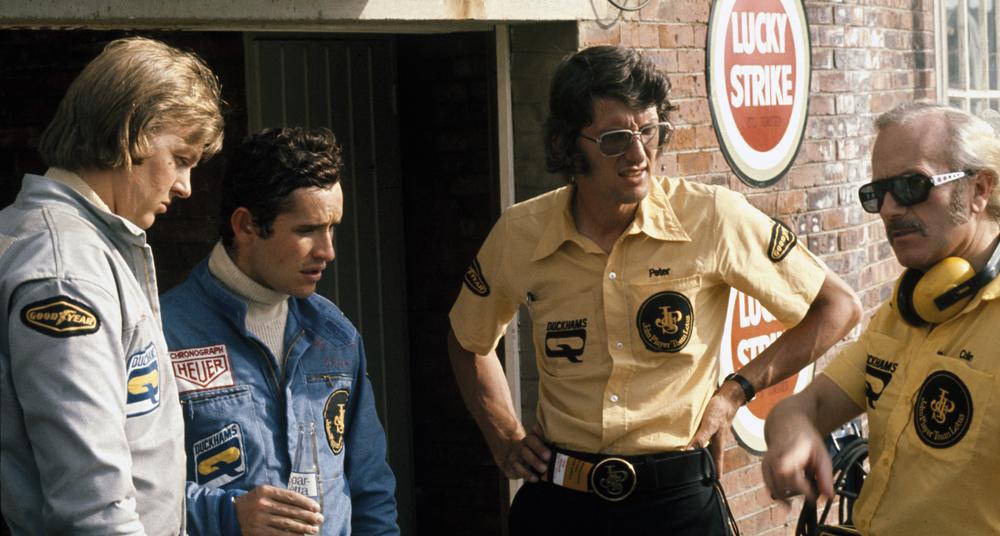
Kyalami, South Africa, 1975. Ronnie Peterson (Lotus 72E-Ford), 10th position, with team mate Jacky Ickx, Peter Warr and team boss Colin Chapman.
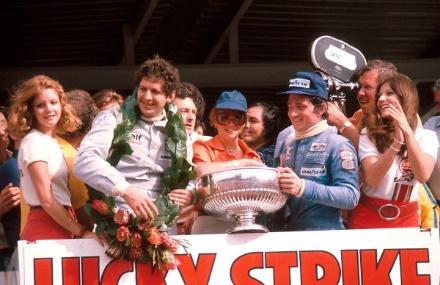
1975 South African GP in Kyalami. Jody Scheckter (Tyrrell Ford), 1st position, with teammate Patrick Depailler (Tyrrel Ford), 3rd position, on the podium. Photo by LAT Photographic.
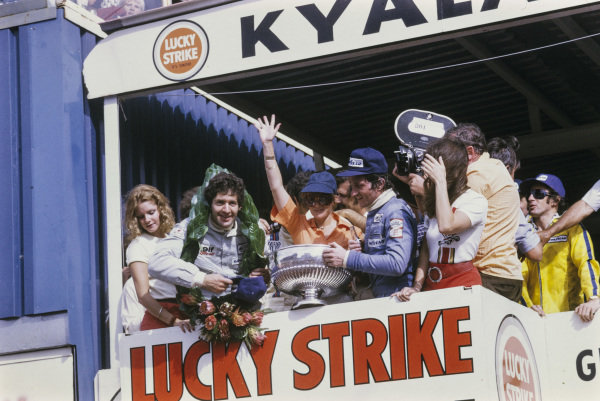
1975 South African GP in Kyalami. Jody Scheckter (Tyrrell Ford), 1st position, with teammate Patrick Depailler (Tyrrel Ford), 3rd position, on the podium. Photo LAT Photographic.
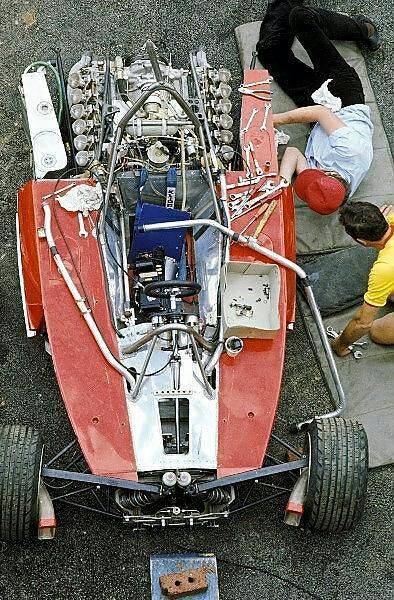
Kyalami 1976.
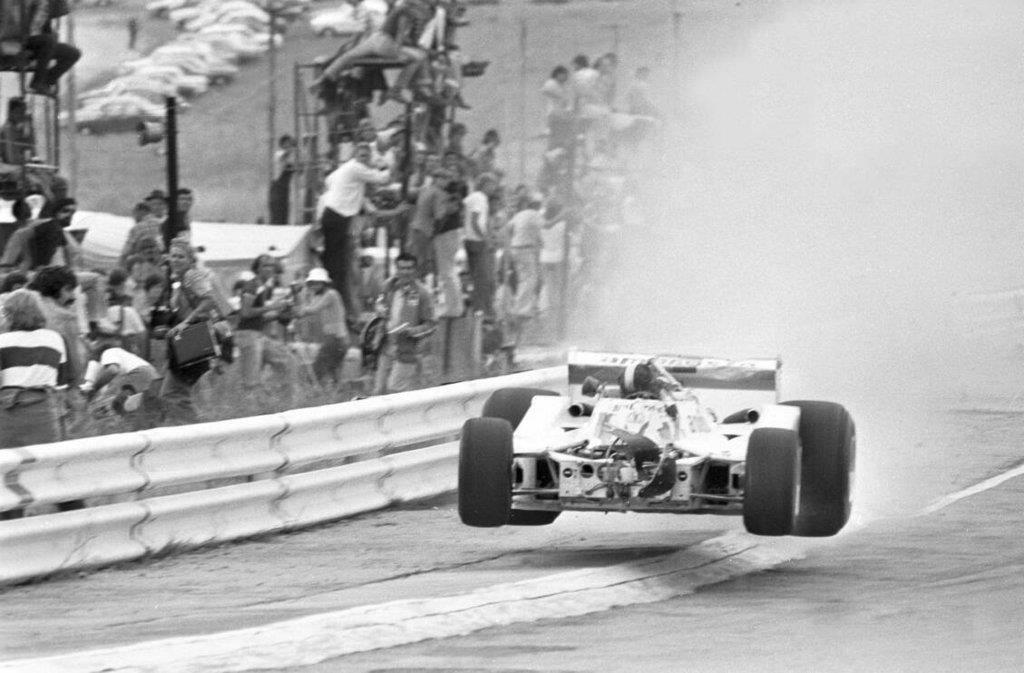
Kyalami 1977.
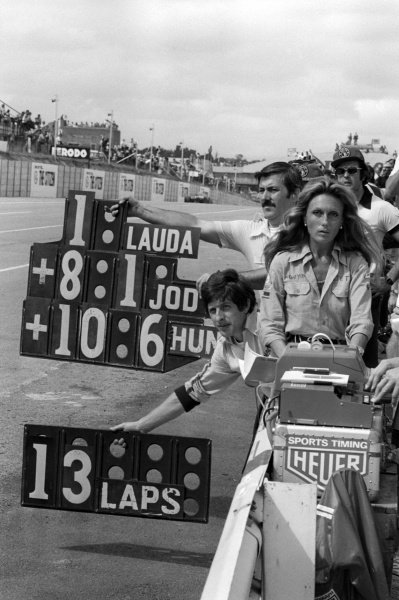
The Ferrari team hold out a pit board for race winner Niki Lauda (AUT) with 13 laps of the race remaining. South African Grand Prix, Kyalami, South Africa, 05 March 1977. Photo by LAT Photographic.
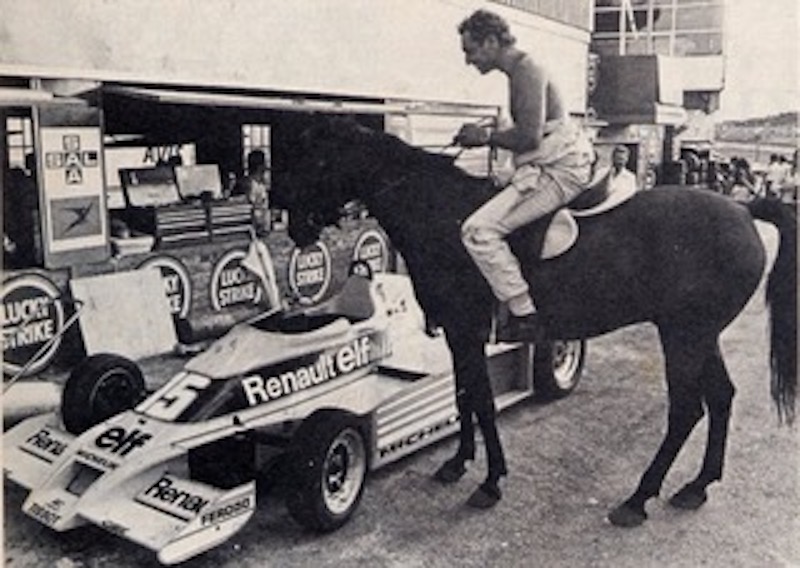
Jochen Mass on horse, Kyalami 1978. “Well, this was different, I borrowed the horse from two girls, they where inside the track during practice and, when my car had stalled near the end of the session and nobody came to pull the car back to the pits, I asked the two girls if I could have one of theirs. Sure, so I climbed over the fence and rode to the pits. Imagine that today. Even Bernie Ecclestone had to laugh. I think we had to give up a lot of spontaneous fun and things to remember in later years.” Jochen Mass
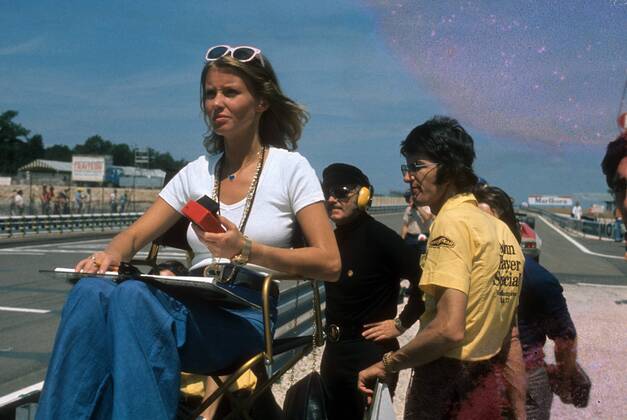
Barbro Peterson at Kyalami in 1978.
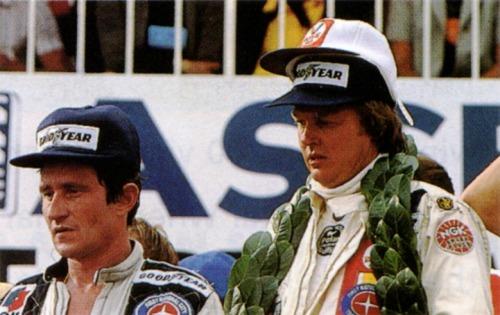
Patrick Depailler and Ronnie Peterson (going a little overboard on the headwear) at the 1978 South African GP. Patrick did not suit hats. And he has no underwear on again. Ronnie looks silly. Credit: Thepagemistress.
Basil Read was tasked with supervising the design and construction of the circuit. Working from a comprehensive study of the world's leading circuits, Read settled on particular surface dressing for the track to give maximum grip in all weather conditions. In choosing a layout, he was keen to maximise the view for spectators.
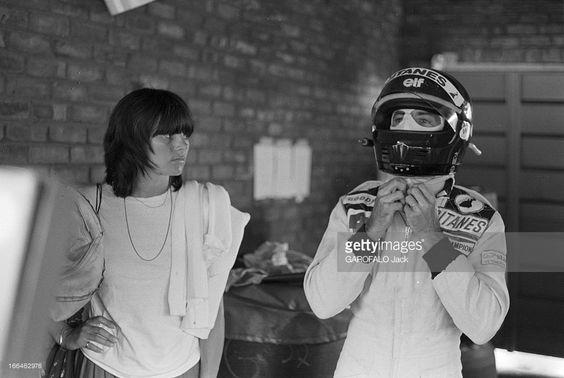
Bernadette Laffite at the 1979 South African Grand Prix on March 4, 1979.
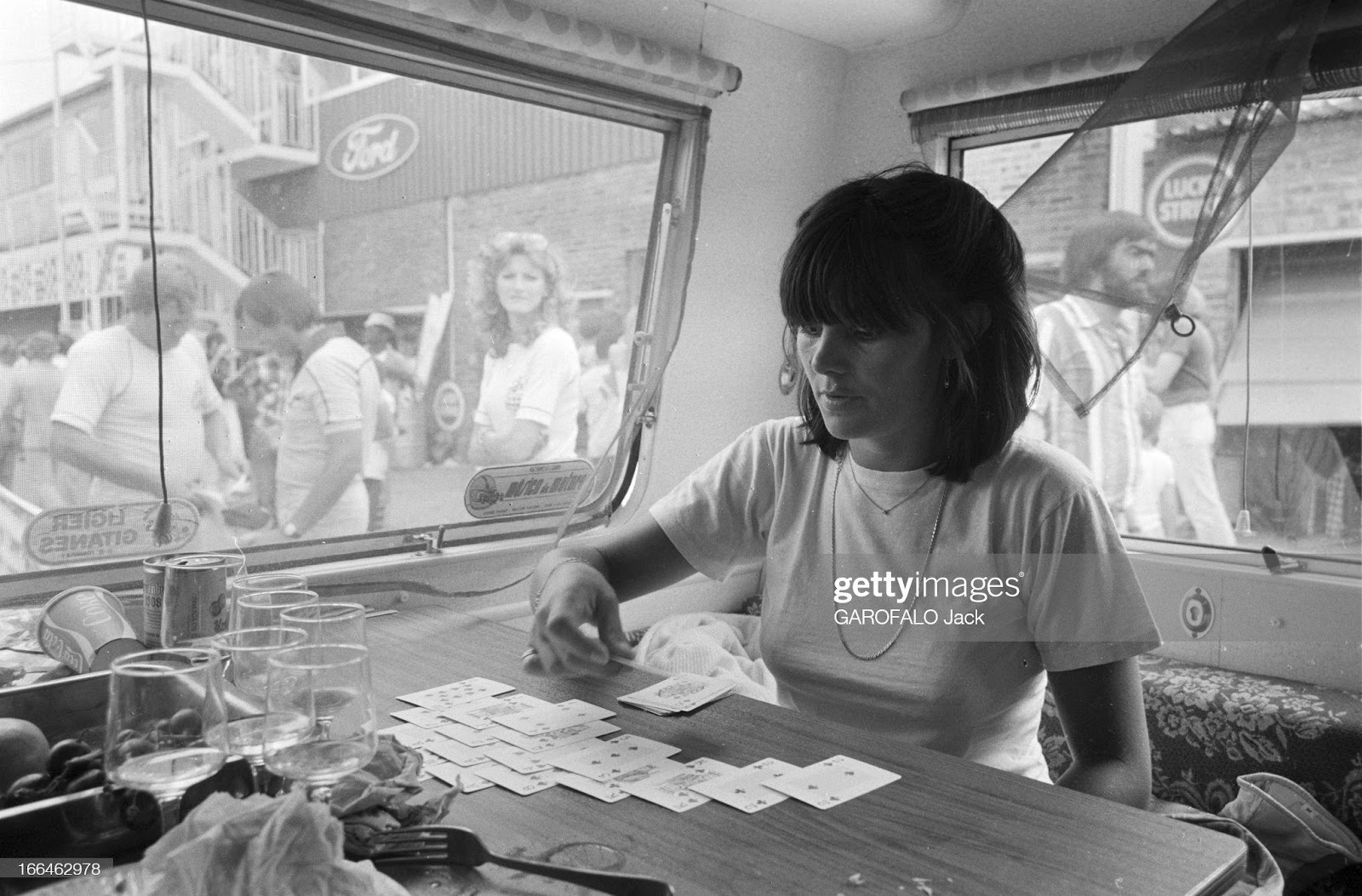
Bernadette Laffite at the 1979 South African Grand Prix on March 4, 1979. Photo by Jack Garofalo/Paris Match via Getty Images.
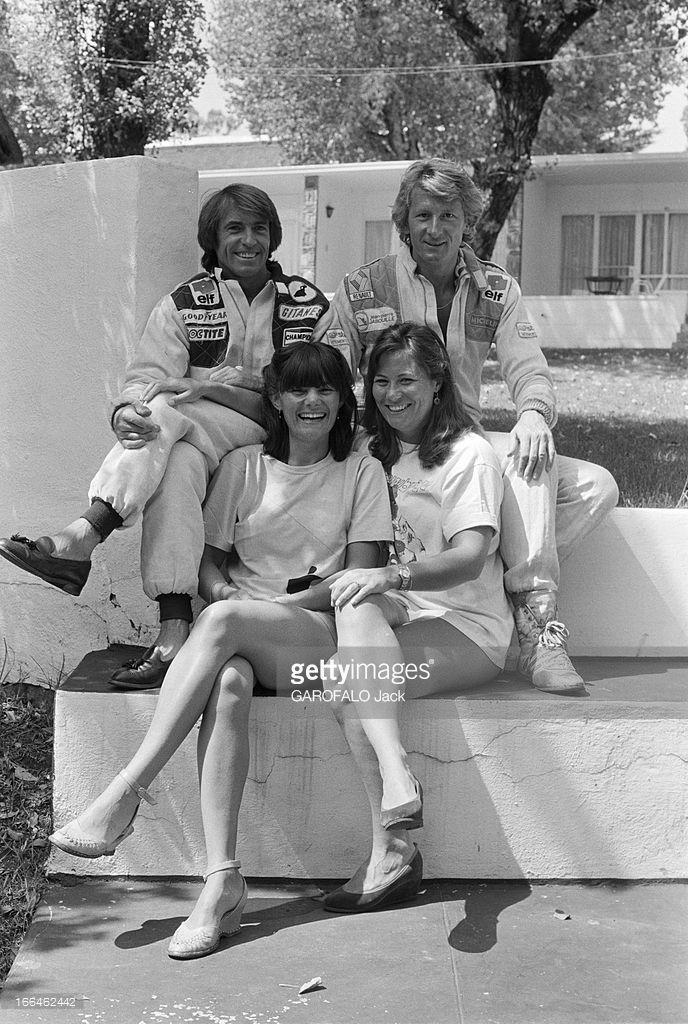
South African Formula 1 GP. On March 4, 1979, Jacques Laffite (Ligier) and Jean-Pierre Jabouille (Renault) pose with their respective wives, the sisters Bernadette and Geneviève Cottin. Competitors on the circuits, the two men are friends and brothers-in-law in life. Photo by Jack Garofalo/Paris Match via Getty Images.
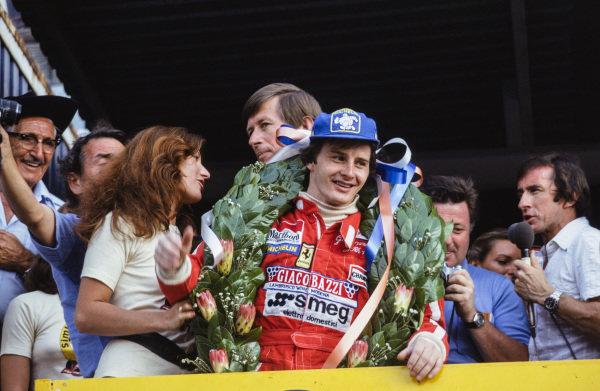
South African GP 1979 at Kyalami. Gilles Villeneuve celebrates victory on the podium as Jackie Stewart broadcasts on the right.
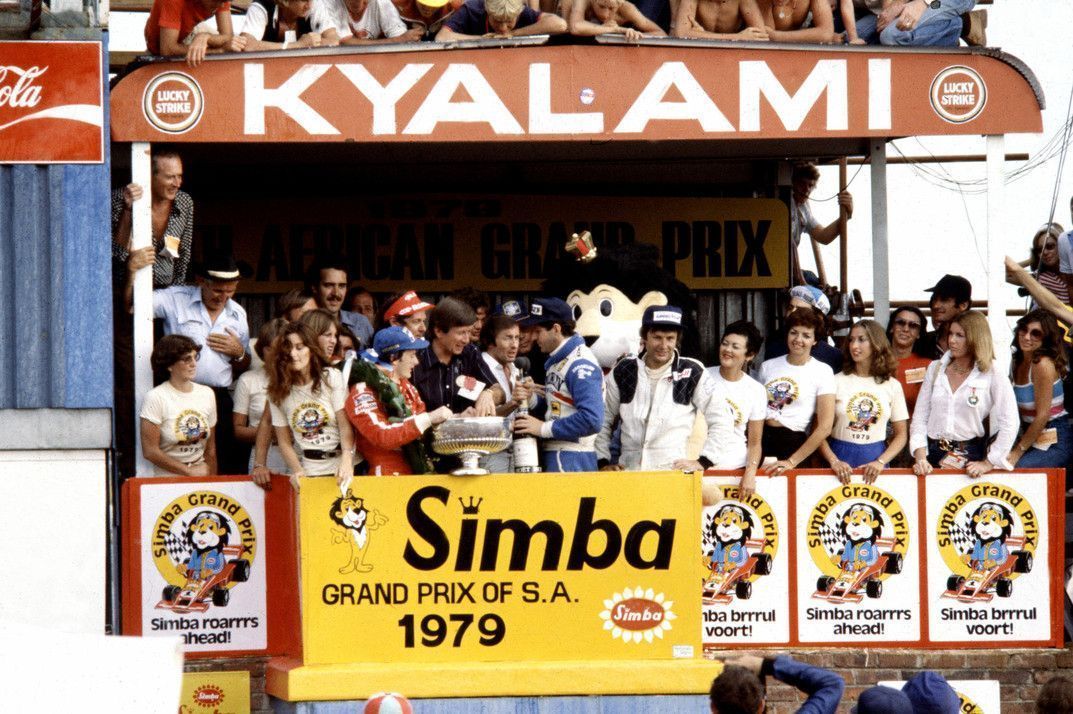
South African GP 1979 at Kyalami. Gilles Villeneuve celebrates victory on the podium.
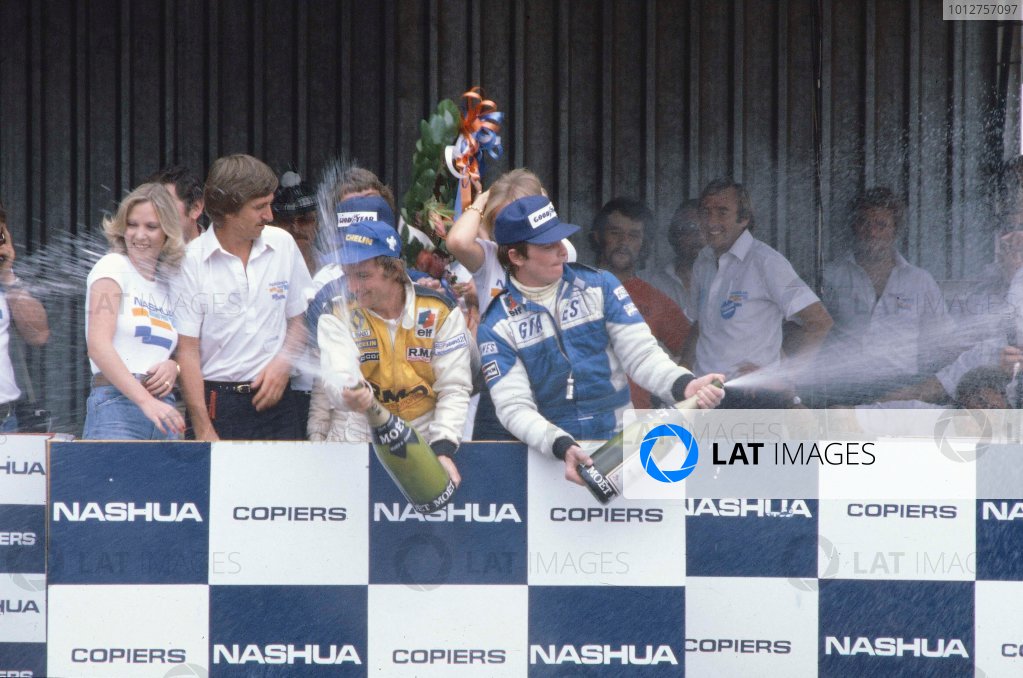
René Arnoux took advantage of his Renault RE20’s turbo power advantage at Kyalami’s 6000 ft altitude to win the 1980 South African Grand Prix. Photo by LAT Photographic.
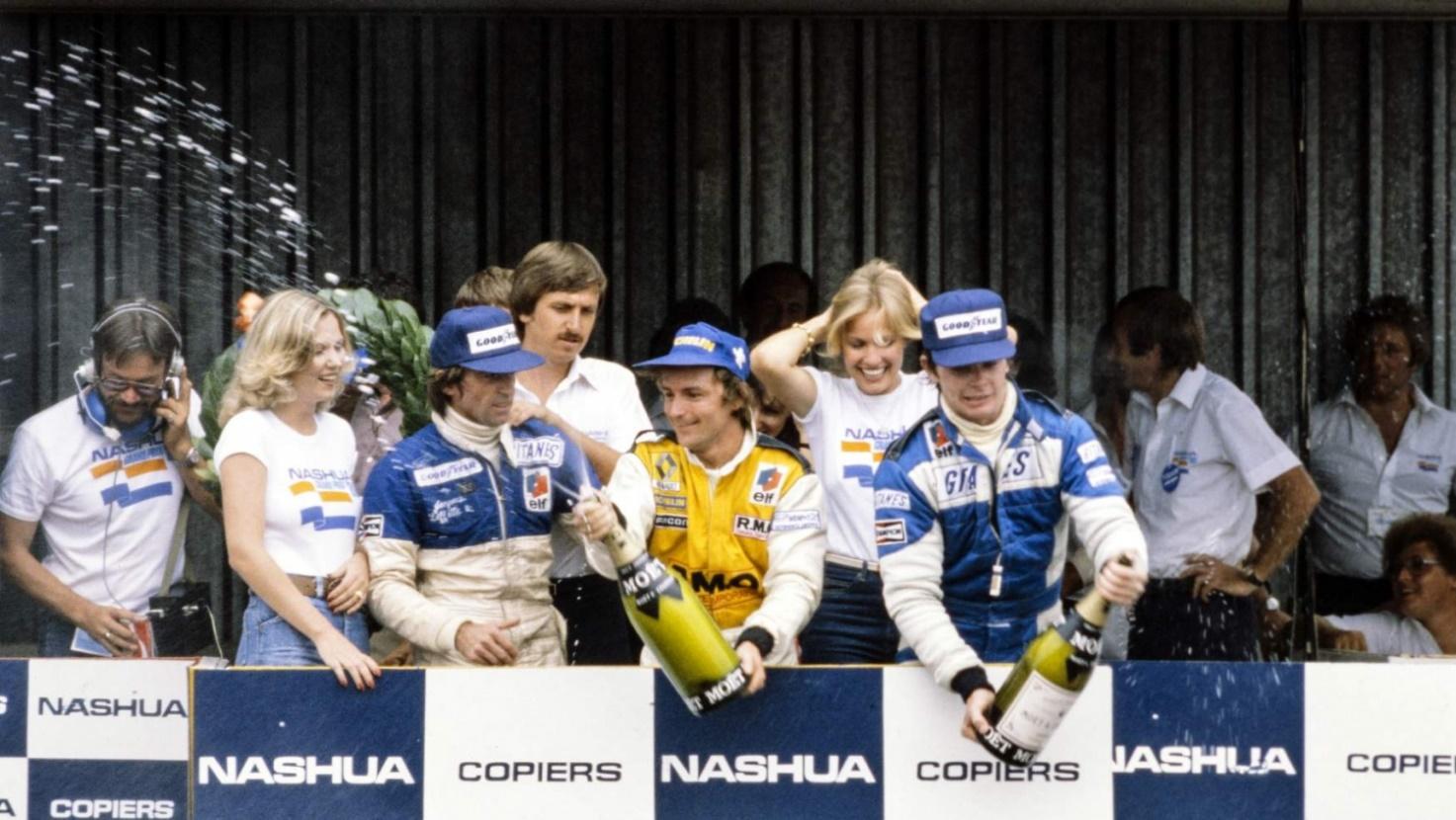
René Arnoux took advantage of his Renault RE20’s turbo power advantage at Kyalami’s 6000 ft altitude to win the 1980 South African Grand Prix.
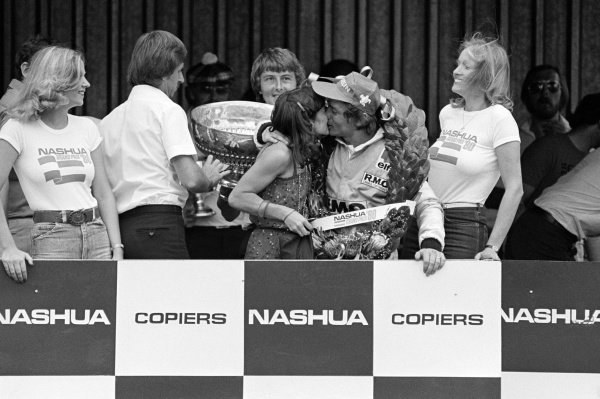
Rene Arnoux kisses his girlfriend at the 1980 Kyalami GP. Photo by LAT Photographic.
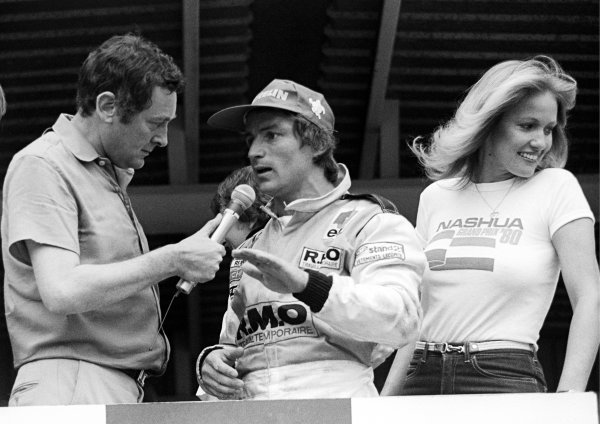
Rene Arnoux, winner of the 1980 Kyalami GP. Photo by LAT Photographic.
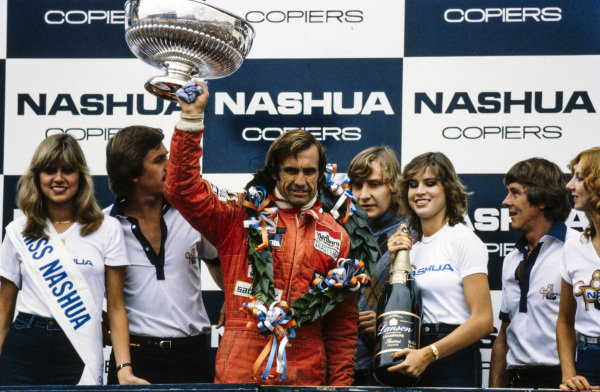
Carlos Reutemann, 1st position, celebrates on the podium at Kyalami in 1981. Photo by LAT Photographic.
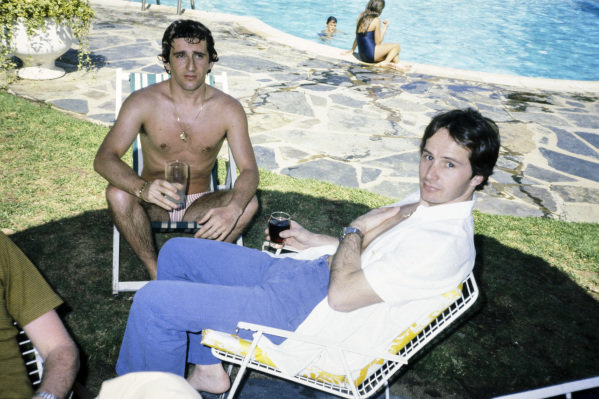
Saturday, January 23, 1982. Gilles Villeneuve having a drink with Alain Prost at Kyalami, South Africa. Photo by Ercole Colombo.
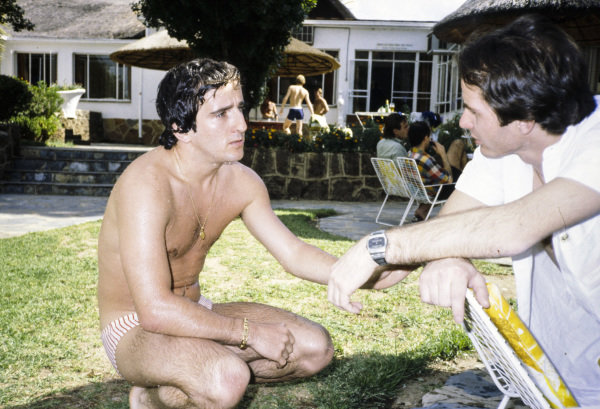
Saturday, January 23, 1982. Gilles Villeneuve and Alain Prost at Kyalami, South Africa. Photo by Ercole Colombo.
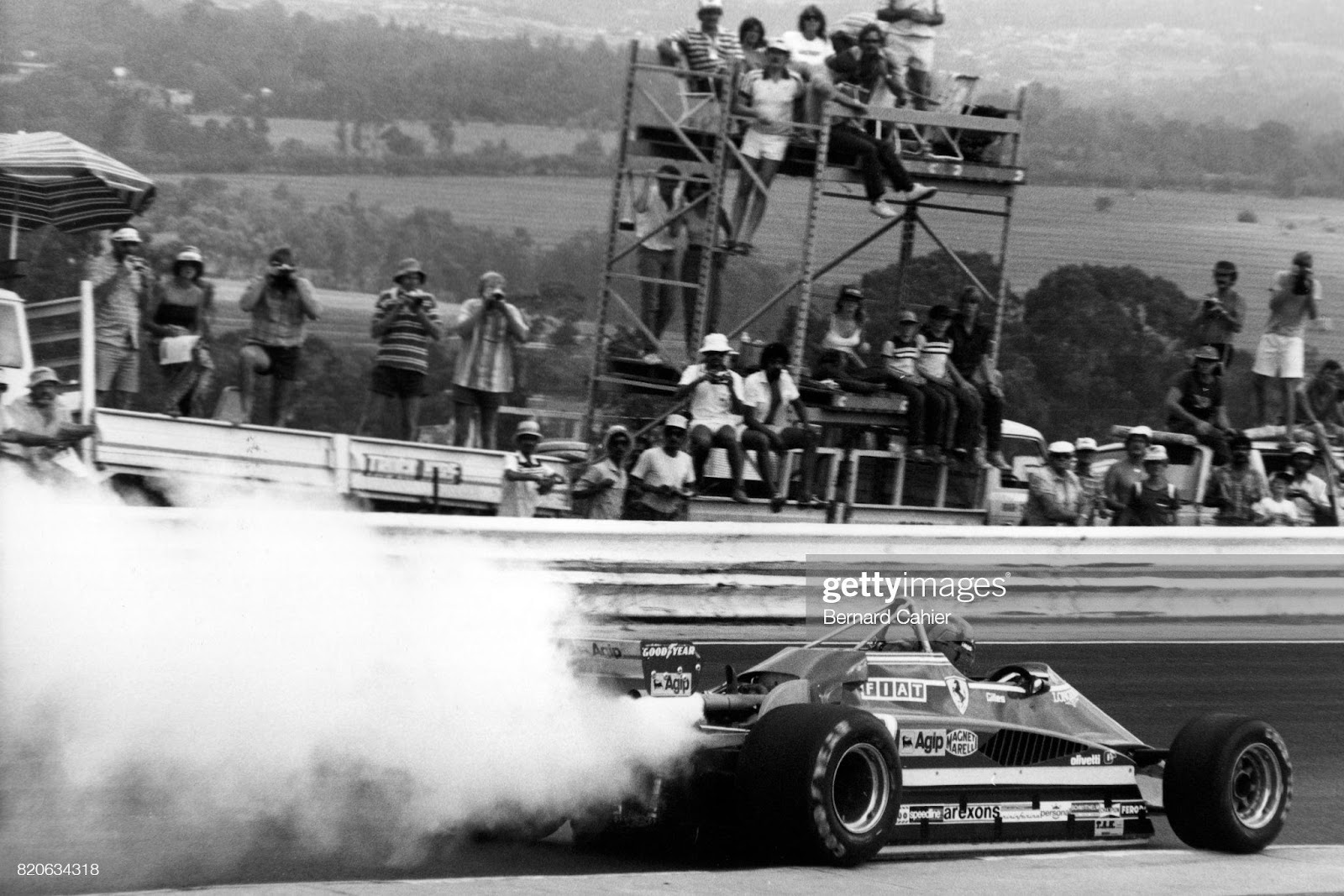
Gilles Villeneuve, Ferrari 126C2, Grand Prix of South Africa, Kyalami, 23 January 1982. Blown turbo for his Ferrari 126C2. Photo by Bernard Cahier/Getty Images.
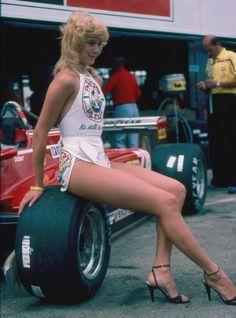
Ferrari 126 C2 of Didier Pironi, Kyalami 1982. Speedzoneimage.
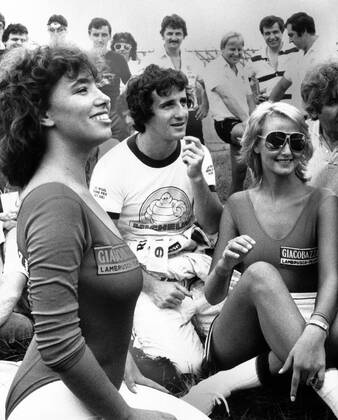
Alain Prost, Renault, with the Giacobazzi Lambrusco promotion girls in 1983.
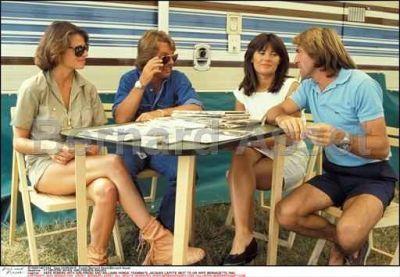
Keke Rosberg and girlfriend with Jacques and Bernadette Laffite in 1984. This is so painfully 1980s, it looks like a scene from a 1980s movie. There are pixie boots, short shorts, double denim and far too much badly cut hair.
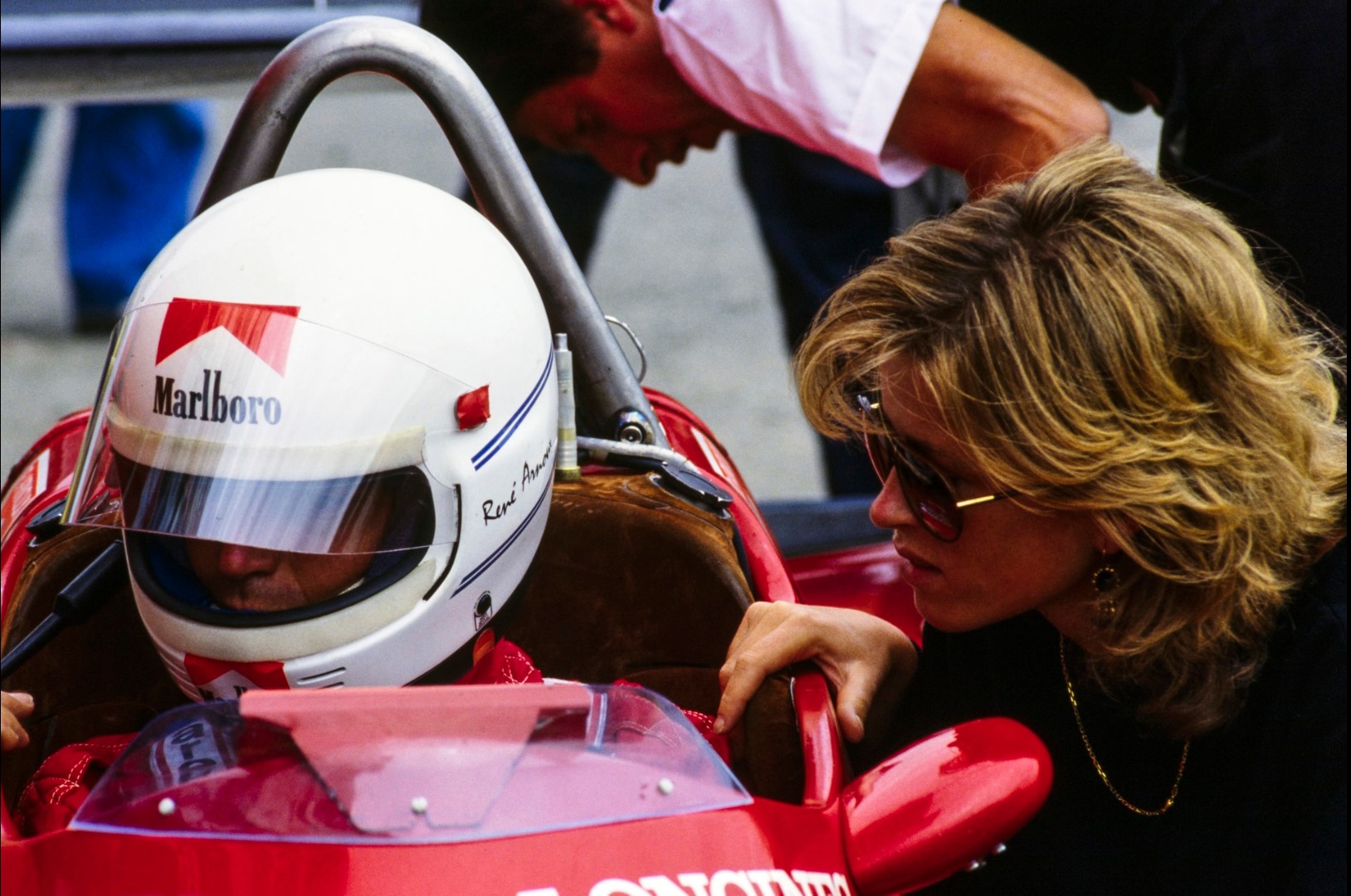
Rene' Arnouux with Pascale at Kyalami on 07 April 1984. Photo by Ercole Colombo.
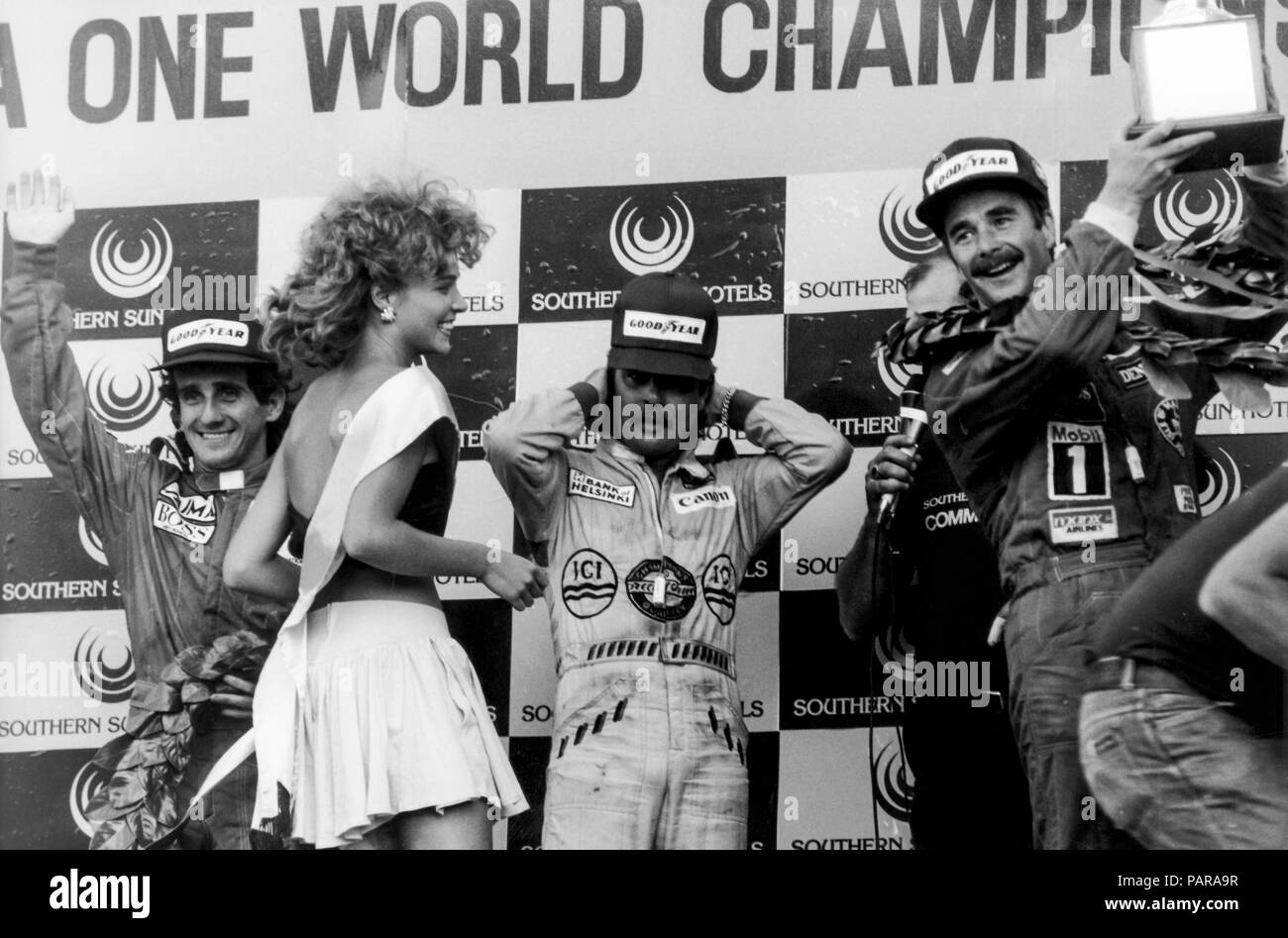
Nigel Mansell, winner of the 1985 Kyalami Grand Prix.
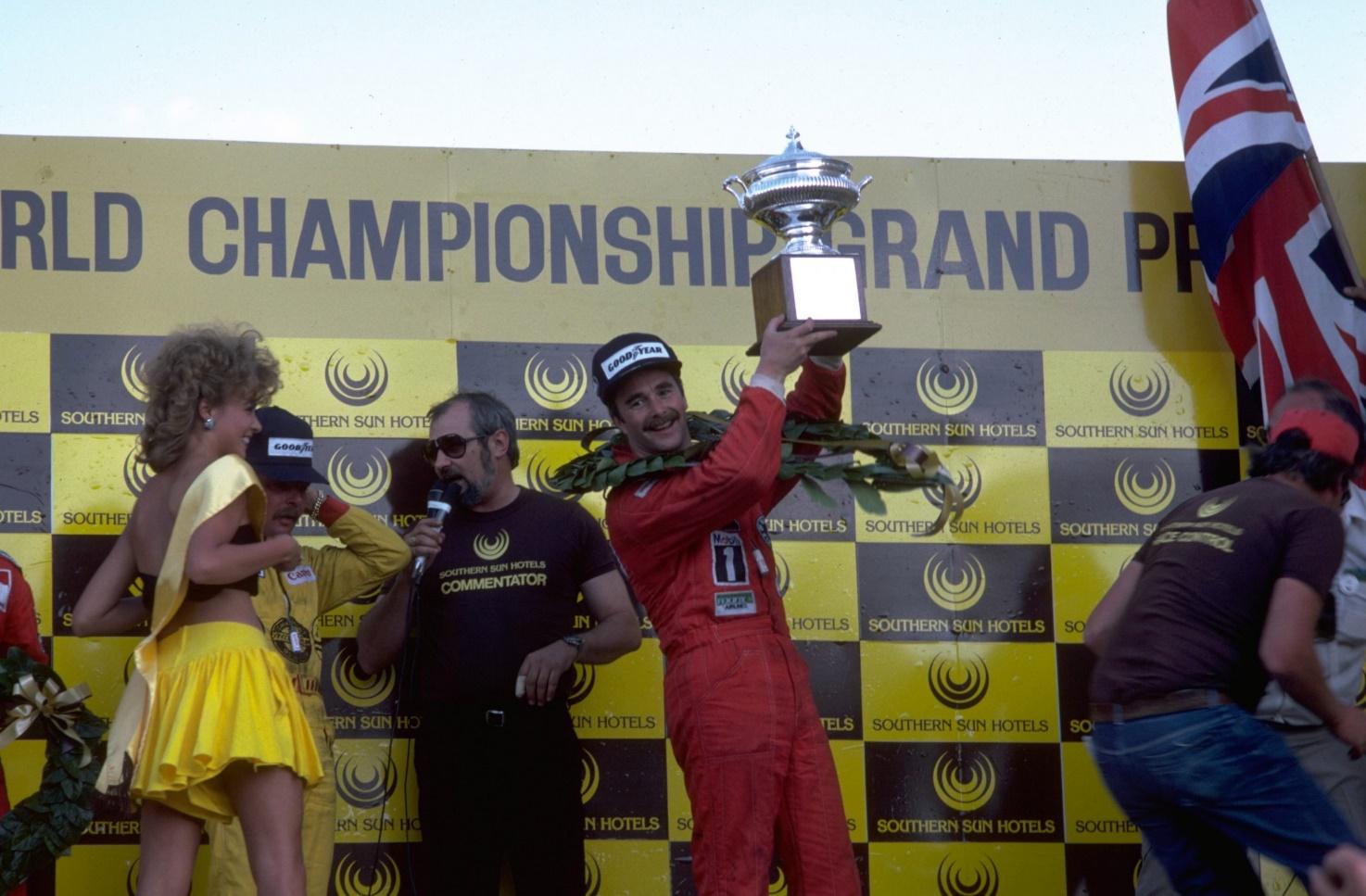
Nigel Mansell and Keke Rosberg at the 1985 South African Grand Prix in Kyalami.
At least two-thirds of the circuit could be seen from most vantage points. He eventually chose a configuration which wound its way down the hillside along a long straight, before turning through a series of fast corners to a hairpin bend and climbing back up the hillside to the start and finish.
Kyalami soon became a favourite among the F1 teams and drivers, its laid-back atmosphere proving a popular way to begin the racing year. It's usual good weather also established it as a major winter testing venue.
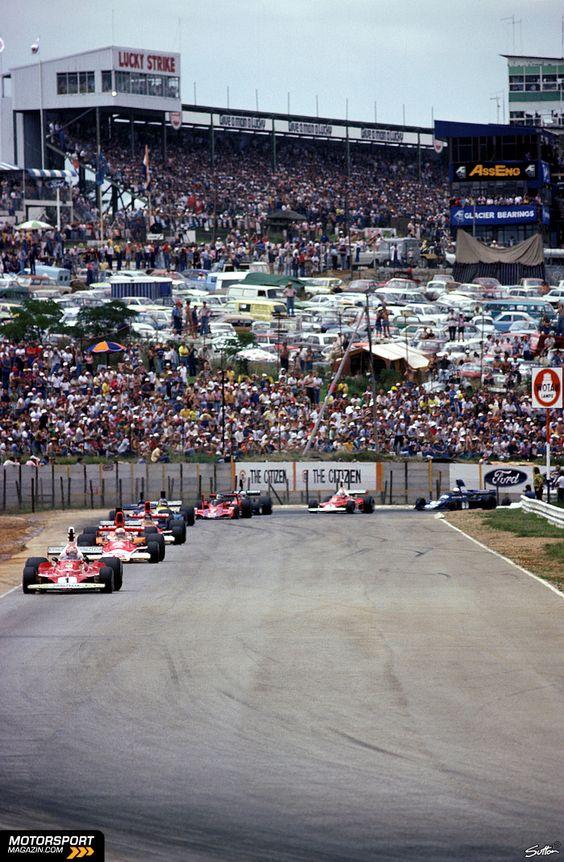
Kyalami GP in 1976.
Notable races included the 1976 Grand Prix, when Niki Lauda and James Hunt crossed the line just 1.3 seconds apart;
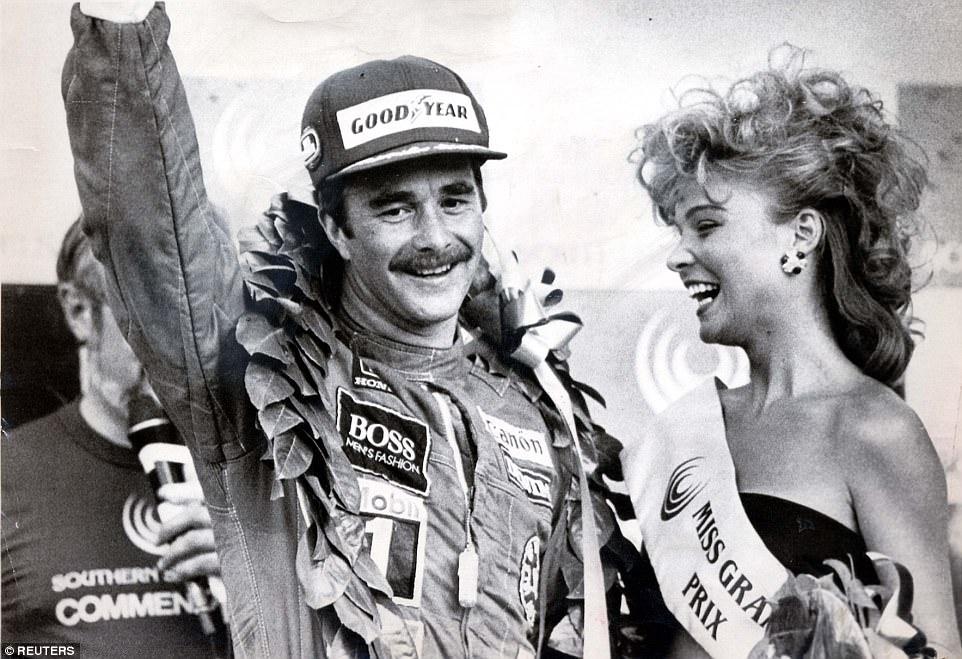
Mansell celebrating victory with 'Miss Grand Prix' in 1985.
1978, when Riccardo Patrese almost won for the new Arrows team and 1985 when Nigel Mansell scored his second win.
There were notable tragedies too; in 1974 Pete Revson was killed at Barbecue Bend while testing for Shadow, while Tom Pryce was killed during the 1977 race when an errant marshal ran out to tend to a broken down car on the pit straight.
Pryce, who was racing at over 170mph, was killed instantly, partially decapitated, when the fire extinguisher being carried by Frederick Jansen Van Vuuren struck him in the head. The horror continued as the Shadow continued at speed, its driver dead at the wheel, to the first corner where it collided with Jacques Laffite’s Ligier, smashing into the catch fencing. Van Vuuren also succumbed to his injuries.
“I was standing at Crowthorne Corner and Tom’s wrecked car ended up at my feet. Every motor racing journalist has a day when the circus left town. Tom’s death and Ronnie Peterson’s the following year hardened me”. Alan Henry told.
“I remember when I came onto the podium and they gave me the laurels and I asked what happened in that accident and the guy said Tom Pryce was killed. I just left the podium. I was upset because he was a real nice guy and I knew him well. Afterwards I saw the accident and it was ridiculous. It was terrible”. Niki Lauda said.
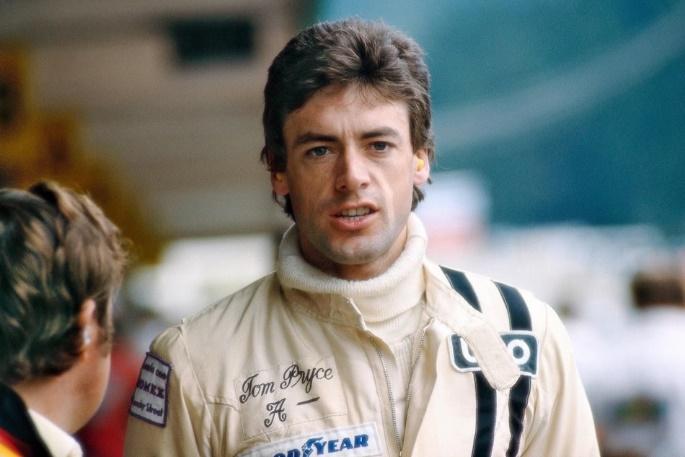
Tom Pryce.
Pryce, Wales' 1970s F1 star, died at the age of 27. “Tom was one of the best drivers out there”, Niki Lauda said.
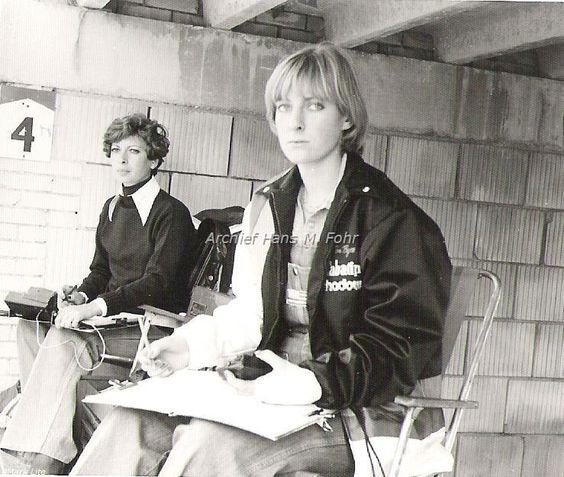
Nella Pryce, right, Tom’s wife.
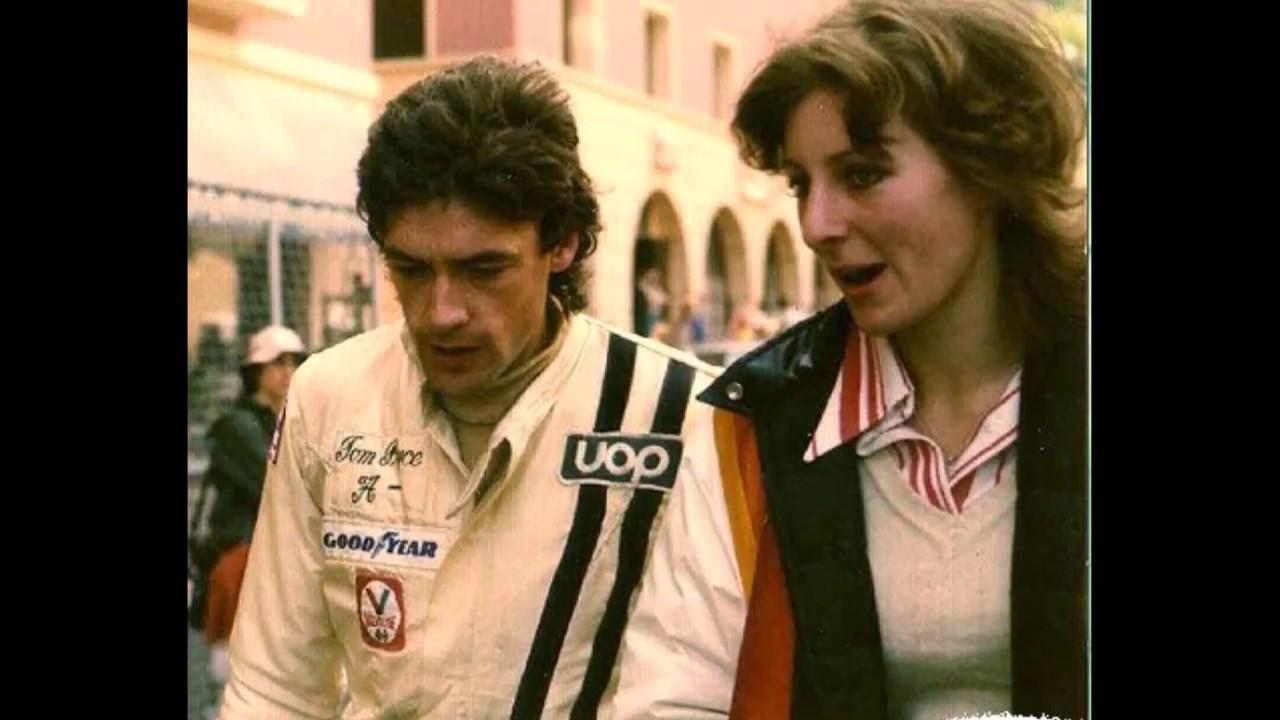
Tom and Nella Pryce.
He had a whirlwind life and grisly death. Humble, fast and handsome – Tom Pryce had it all.
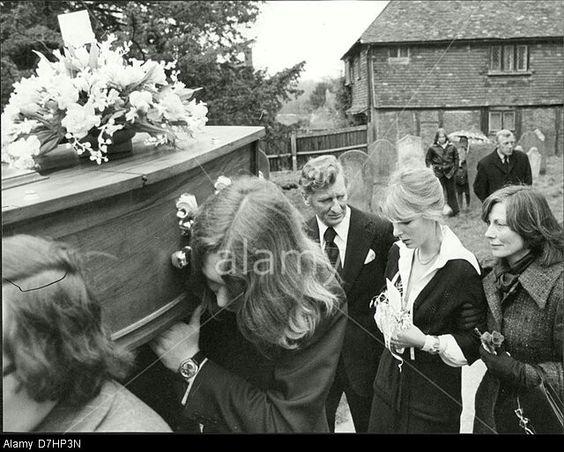
Tom Pryce funeral. Nella Pryce with who I think must be her parents.
He was one of the quickest Formula One drivers of the 1970s, a decade littered with some of the sport’s greatest talents – and some of its most tragic events. Between 1974 and 1977, Thomas Maldwyn Pryce – a shy, Welsh-speaking tractor mechanic from rural north Wales – lit up the gladiatorial years of James Hunt and Niki Lauda in F1. “He was out of the Ronnie Peterson mould, a bit like Kimi Räikkönen – great natural skill and tremendous car control”, friend and F1 journalist Alan Henry said. His giant-killing performances, combined with his friendly, unassuming persona, cemented him into the vanguard of British talent alongside James Hunt’s more headline grabbing personality.
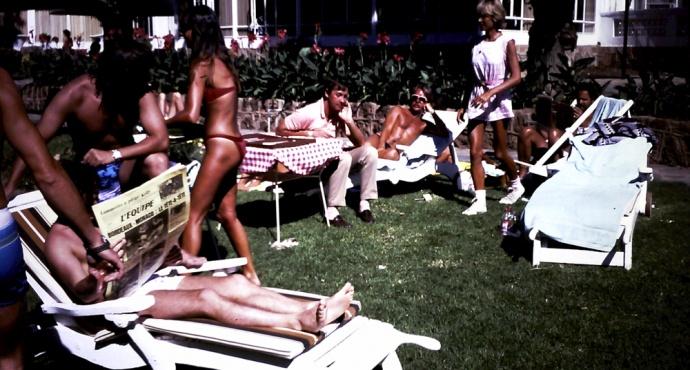
The sunny side of Kyalami, as it was in the 1960s and 1970s, which is so beautifully captured in archive images. Photo by Getty Images.
South Africa is a classic in F1. Kyalami was one of the most beloved of old circuits and F1 stained its reputation by continuing to race at it well into the eighties, by which time international pressure on the Apartheid regime was enormous and many other sports were boycotting South Africa.
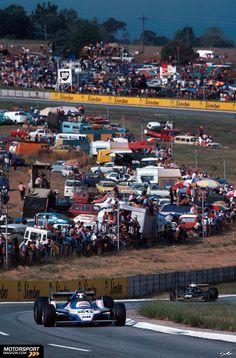
Jacques Laffite at Kyalami.
Kyalami was a great track before they changed it. Those were the days, now we can only drool in front of the TV.
RIP Kyalami? August 8, 2014. By Brian Sims.
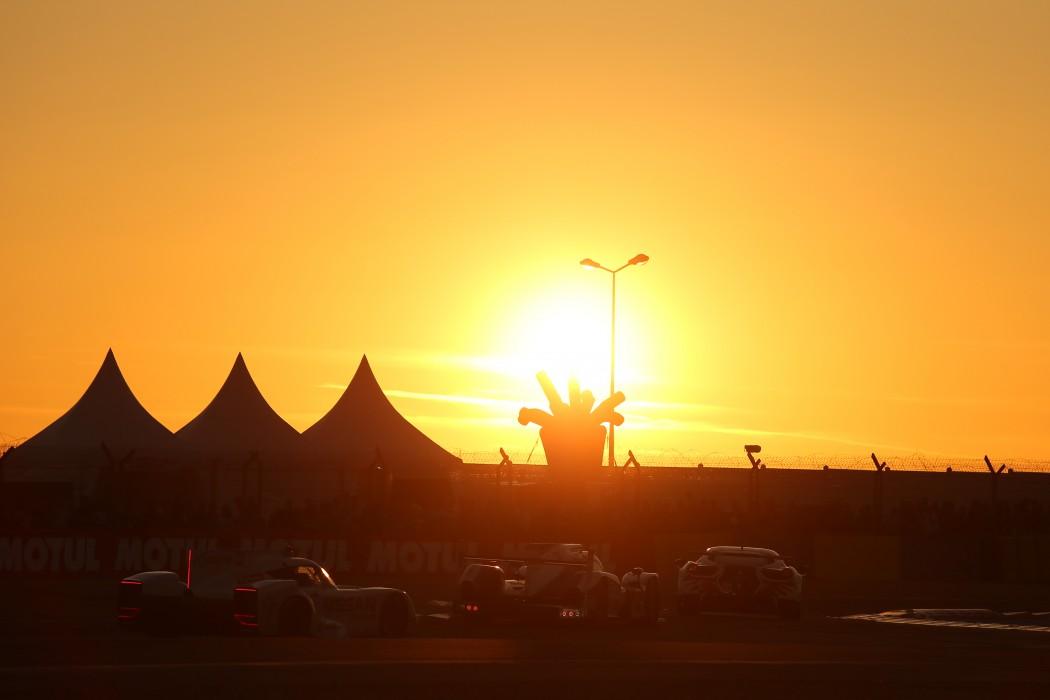
On the 24th July 2014, the famous Kyalami Grand Prix Circuit in South Africa will come under the hammer at an auction run by Johannesburg’s High Street Auction Company. No reserve has been placed on the sale.
When I first heard this news, from F1 photographer Mark Sutton, it came as no real surprise, but I still found it incredibly depressing. Kyalami played a major role in my 40-year motorsport career and the thought of it possibly being dug up for housing or industrial development doesn’t do a lot for my soul. What makes it worse is that in my opinion, its potential demise, along with the decline in the popularity of motor racing in South Africa, could have been avoided. I’ll explain my feelings on that as we go along.
The first time I saw the Kyalami GP Circuit was in 1975, when I flew to South Africa to visit my parents. It was Grand Prix time and a friend of my Dad’s invited me to the race. It was unlike anything I’d ever seen at a Grand Prix in Britain. Spectators started arriving on the Monday preceding the Grand Prix and camped right around the track’s perimeter. A variety of scaffolding towers, many of them huge, were erected, whilst trucks and bakkies (pick-up vans) with seating installed in the open load areas, interspersed with caravans and motorhomes. By the Saturday morning, Kyalami, a crowd in excess of around 70,000 people totally surrounded the track, having driven in from all parts of South Africa. It was a vibrant atmosphere, fuelled by the smell of thousands of braiis (barbeques) and with alcohol available freely, there were more than a few parties going on!
After local hero Jody Scheckter, in a Tyrrell, delivered a home victory for the adoring fans, the partying was still in full swing as people were leaving on the Monday morning.
Little did I realise that within 5 years, I would be Manager of the Kyalami Grand Prix Circuit, with a FISA/FOCA battle and a drivers’ strike to contend with in my first two years. I outlined these two events in an earlier Money, Egos and Speed feature (Oct 2013 Edition).
Interestingly, I was in Bahrain for the Grand Prix this year and met up with Niki Lauda.
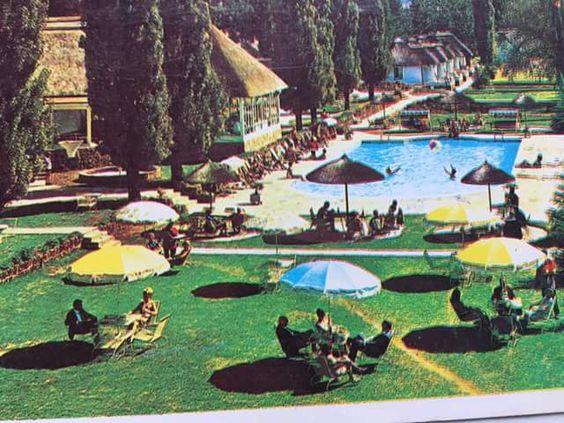
Kyalami Ranch Hotel.
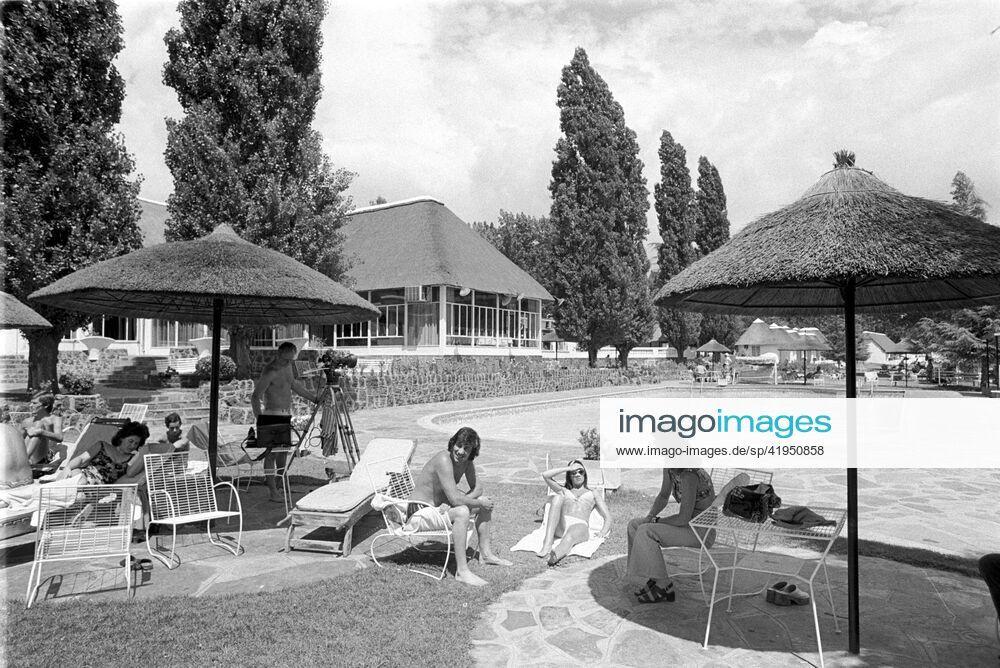
Relaxing by the pool at the Kyalami Ranch hotel close to the circuit of the South African Grand Prix. Kyalami, 3 March 1973. Credit Imago / Motorsport Images.
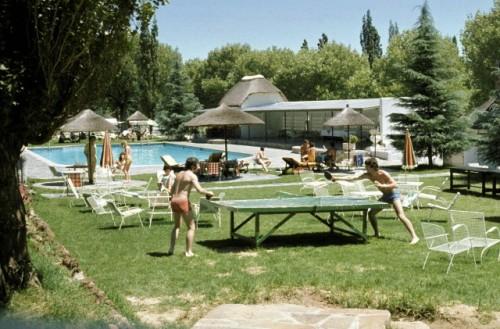
Francois Cevert and Jackie Stewart play table tennis at Kyalami Ranch.
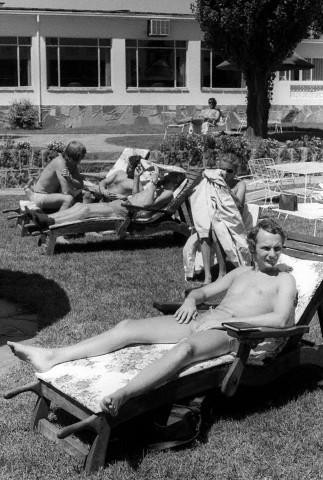
A very smooth and lightly-clad Niki Lauda suns himself at Kyalami ranch. Also note Ronnie Peterson and a massive-haired Mario Andretti chatting behind. Another driver hiding under a newspaper.
We chatted for a few minutes about the Kyalami Circuit and the incredible parties that took place at the Kyalami Ranch Hotel, adjacent to the track, where many of the drivers and some of the teams always stayed.
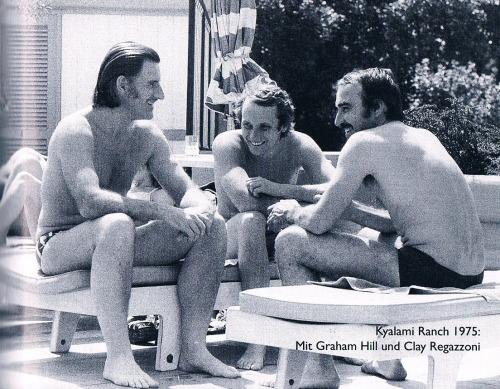
Graham Hill, Niki Lauda and Clay Regazzoni at the Kyalami Ranch in 1975. When men were men and everything was simultaneously much more and far less tacky than it is now.
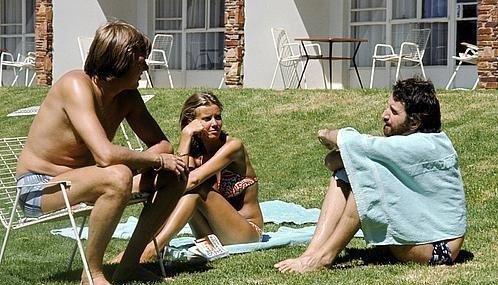
Sunny Kyalami Ranch fun with Ronnie and Barbro Peterson in 1978. John Watson seems rather self-conscious today - it obviously isn’t cold.
He reckoned that Kyalami was his favourite venue for winter testing. Not only was it a great circuit in its own right, but with the Southern Hemisphere weather and the opportunity to visit a game camp or two, he always looked forward to heading to South Africa.
Situated at some 1800 meters above sea level, the circuit posed a serious power-loss challenge for normally aspirated engines, whilst the turbo-charged units could compensate by the boost being turned up.
It wasn’t just the altitude that affected the F1 teams when they arrived. The African sun took its toll and many a mechanic, especially those who had flown in from an English winter, ended up looking as though they were wearing a Ferrari shirt, so burnt had they become.
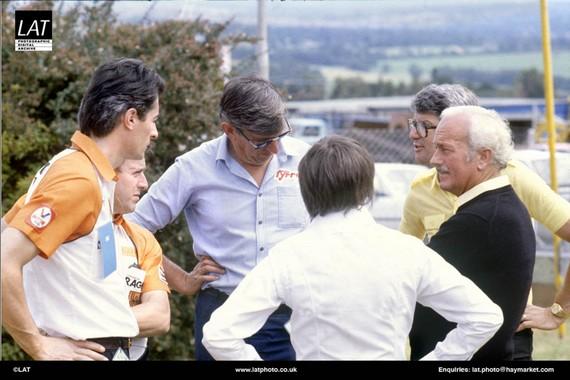
Formula 1 strike at Kyalami, South Africa, in 1982.
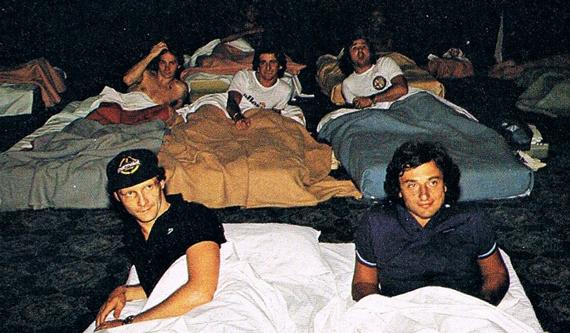
South Africa 1982. The drivers weren’t happy with FISA, the current FIA, as there were quite a few concerns regarding safety and contract issues. With Niki Lauda being the main instigator of the whole saga, the drivers decided to go on strike prior to the race in Kyalami. On the morning of the first official session, Niki Lauda and Didier Pironi (who was the GPDA chairman at the moment) rounded up the fellow drivers - all bar Jochen Mass - in a bus and headed to a hotel in Johannesburg, where they all stayed the night. The following day an agreement was reached and they all took part in qualifying and the race. In the picture major points of interest are Rene Arnoux’s slacks and Gilles Villeneuve’s rather unorthodox pigeon-toe pose.
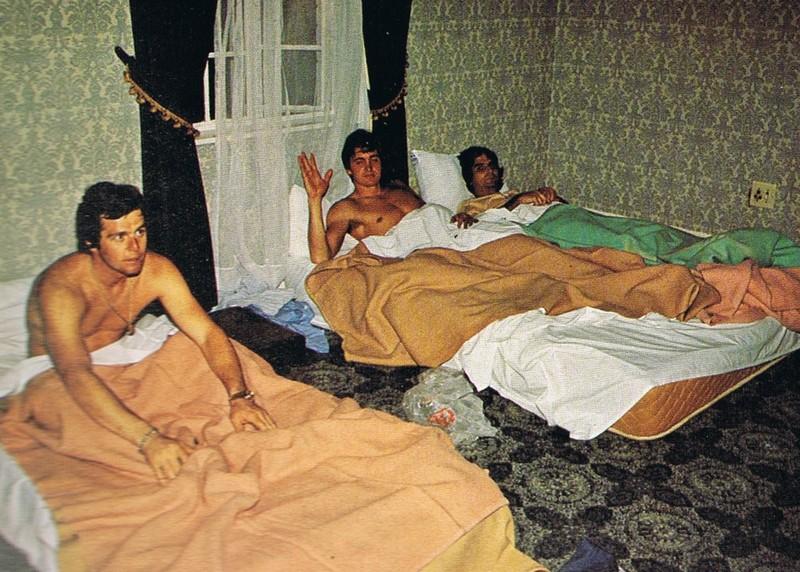
Formula 1 strike, South Africa, 1982.
Sadly, in 1985 a combination of factors, political, economic and local resident related, prevented the extremely popular South African Grand Prix taking place for the next eight years. It was the end of a glorious era for the famous race track, which had witnessed so many incredible F1 races.
On December 5th 1987, the final race took place on the circuit, an international Group C sports car event. Once the chequered flag had fallen for the final time, the famous circuit was closed and industrial developers moved in. I always count myself privileged to have taken part in the final race.
All was not totally lost, however, and eventually a new Kyalami sprung from the ashes of the old. Sections of the old circuit remained in the design, but the new track layout never regained the stature and respect that the Kyalami of 1967-1987 had earned. In the words of one former Grand Prix reporter, it had just become “yet another mundane modern race track!”
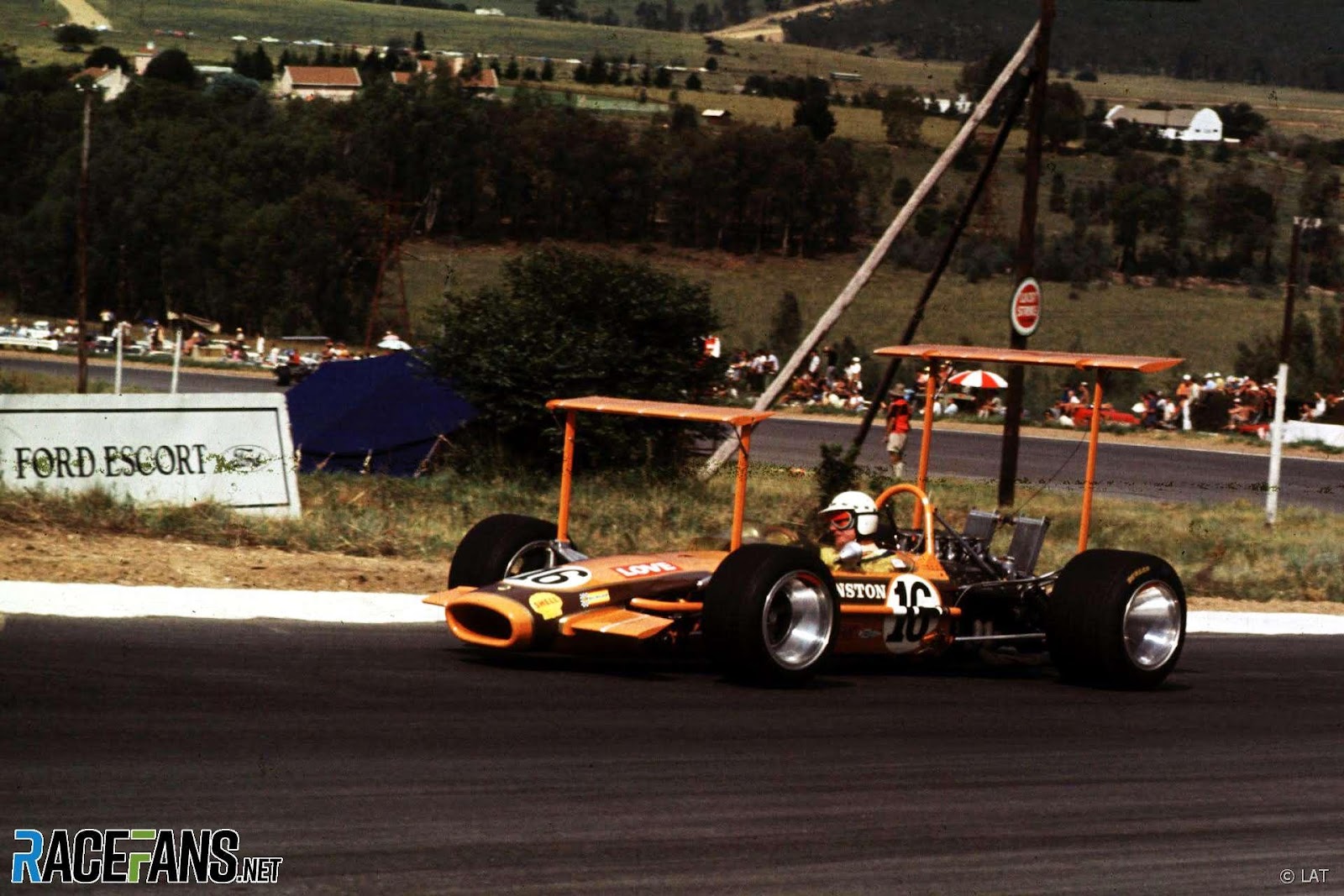
In a country that has a reputation for “imaginative” business dealings, that wasn’t the end of the story for Kyalami. The new version of the circuit was at the centre of a huge Supreme Court case in the early ‘nineties. It became known as the Tollgate Holdings affair and some of the directors of the company MRE that now owned the track were also involved as directors of Tollgate Holdings, a major South African Holdings Corporation. The High Court judge was damning in his comments on the senior management of that company. The result was that the Motor Racing Enterprises (MRE) went into liquidation. The circuit then came under the control of country’s governing body of motorsport, MSA.
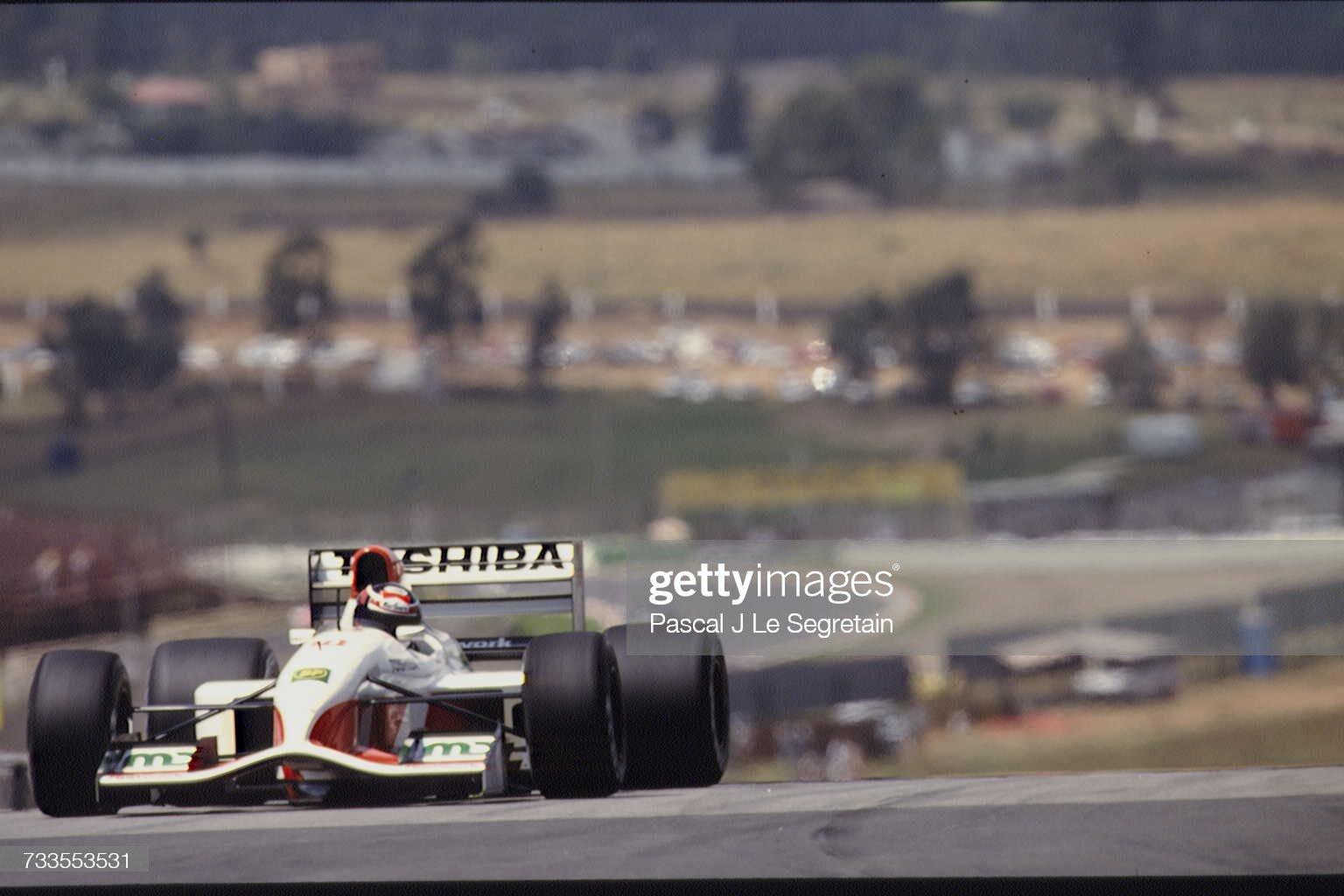
Kyalami, South African Grand Prix, on 28 February, 1992. Photo by Pascal Le Segretain/Sygma via Getty Images.
In 1992, two years after Nelson Mandela had walked out of the gates of Pollsmoor Prison and two years before his Presidential inauguration, the South African Grand Prix reappeared on the World Championship Calendar. In 1993, as Marketing Director of the Lola F1 Grand Prix Team, I returned to Kyalami and watched Alain Prost in a Williams take victory in a Grand Prix which had only seven drivers classified as finishing the race. It proved to be the last ever South African F1 Grand Prix.
Gradually, as sports like soccer, cricket and rugby came to the fore in South Africa; motorsport started a decline that was both alarming, but avoidable. Instead of trying to halt the slide and develop motorsport programmes that would appeal to the rapidly emerging black middle class within the “rainbow nation”, all that those involved could think of was getting an F1 Grand Prix to South Africa. As fervour grew in this respect, logic went out of the window. Several high profile individuals, many with a litany of drama in their wake, headed up different campaigns designed to bring back the SA Grand Prix. Some wanted a street race in Cape Town, others a new circuit built in Johannesburg and then there were stories of a new super Grand Prix circuit being built in Durban. The problem was that no-one had actually worked out that a Grand Prix doesn’t make money and certainly doesn’t create the number of sustainable new jobs being predicted as being in their thousands.
Meanwhile, national motorsport in South Africa continued its decline, with BMW, Toyota and Nissan pulling out of track racing to concentrate either on other marketing activities, or on off-road motorsport.
Then in 2009, the Province of Gauteng, formerly known as Transvaal, hit the headlines by announcing its sponsorship of the BMW Sauber F1 Team. It appeared under the branding of GO-GP.ORG. This was supposedly meant to be an attempt to promote Gauteng Province (GP) as “a great place to do business”, but ended up with most people thinking it was yet another campaign to promote a South African F1 Grand Prix (GP)!
This in turn lead to a string of what could best be kindly described as average international motorsport events being staged at Kyalami, at an extraordinarily high cost, somewhere in the region of R600 million (at that time the exchange rate was close to 10:1). These events had been organised through a sports management company set up by the Province, attracting many of the usual names that one associated with motorsport based financial adventures.
The entire debacle attracted an interesting response from the Opposition Party, the Democratic Alliance. This is an extract of the alleged claims:
“Leaked documents to the Democratic Alliance show that more than R600 million is to be paid for motorsports promotion in Gauteng that will do little to boost the economy or create jobs.
We will be paying R150 million over three years for the A1 Grand Prix, R444 million over seven years for the Super Bikes World Championship, and R39 million for three years of the Super Stars series.
A report by Bowman Gilfillan prepared in October last year for Blue IQ, an agency of the Gauteng Department of Economic Development (DED), is extremely critical of glaring irregularities in the Motorsports projects and the high-risk contracts entered into.
Identified deficiencies include:
Gauteng Motorsport Company (GMSC) was corporatised without Treasury approval
Supply chain compliance is unknown
It is unknown what amounts have already been paid out
The assets and licences attached to the project are unknown
The contracts are either silent on Governing Law or a foreign Governing Law applies
No breach clauses
Government obligations beyond the scope envisaged by the PFMA
No financial cap on the amounts to be spent for hosting the events
No exchange control clearance from the SA Reserve Bank”
As you can see, this wasn’t the most confidence inspiring endorsement of the motorsport activities taking place at Kyalami. Since then, matters have gone from bad to worse, with poor attendance at race meetings and constant uncertainty about the fate of the circuit.
It might be easy to blame all of Kyalami’s woes on a poor economy, or the fact that 25% of all South Africans are unemployed, but that would be to ignore the success story of the privately owned Zwartkops Race Circuit, some 10 miles away from Kyalami. The owner, Peter Du Toit has done an amazing job in building this derelict old track into a superb national standard race circuit. Its focus is on promoting historic, club level and national races at affordable prices. He has given the large number of spectators who attend the race meetings races at Zwartkops exactly what they want, with no grandiose ideas for an F1 Grand Prix to draw all of South Africa’s sponsorship spend into one annual 3-day bender!
Once again, the future of Kyalami as South Africa’s major race venue is in the balance. With an estimated price tag of around R150 million, the circuit may be purchased by a rich enthusiast from somewhere around the world. Then again, it’s an attractive venue for the development of the proposed Mall of Africa project, which would be the country’s largest-ever shopping mall. Sadly, there’s no room for sentiment at an auction!
I only hope that if the circuit does survive as a motorsport venue, some realistic business planning takes place and that the usual suspects, who see it as a chance to make a financial killing, don’t get involved again. If it doesn’t survive; RIP Kyalami.
Videos
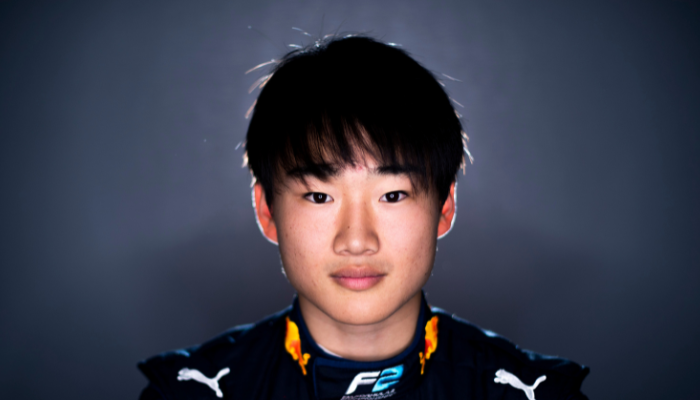
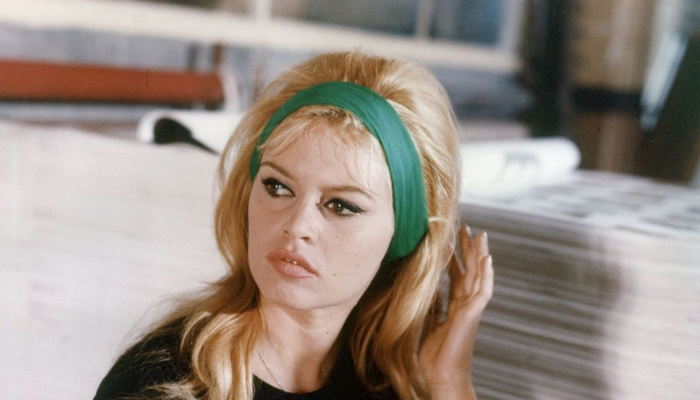
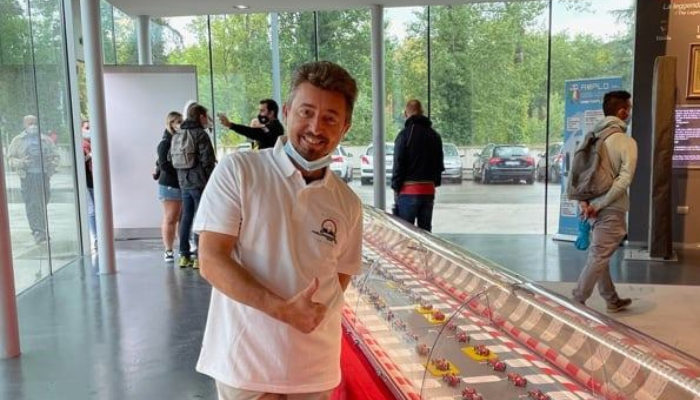
Comments
Authorize to comment